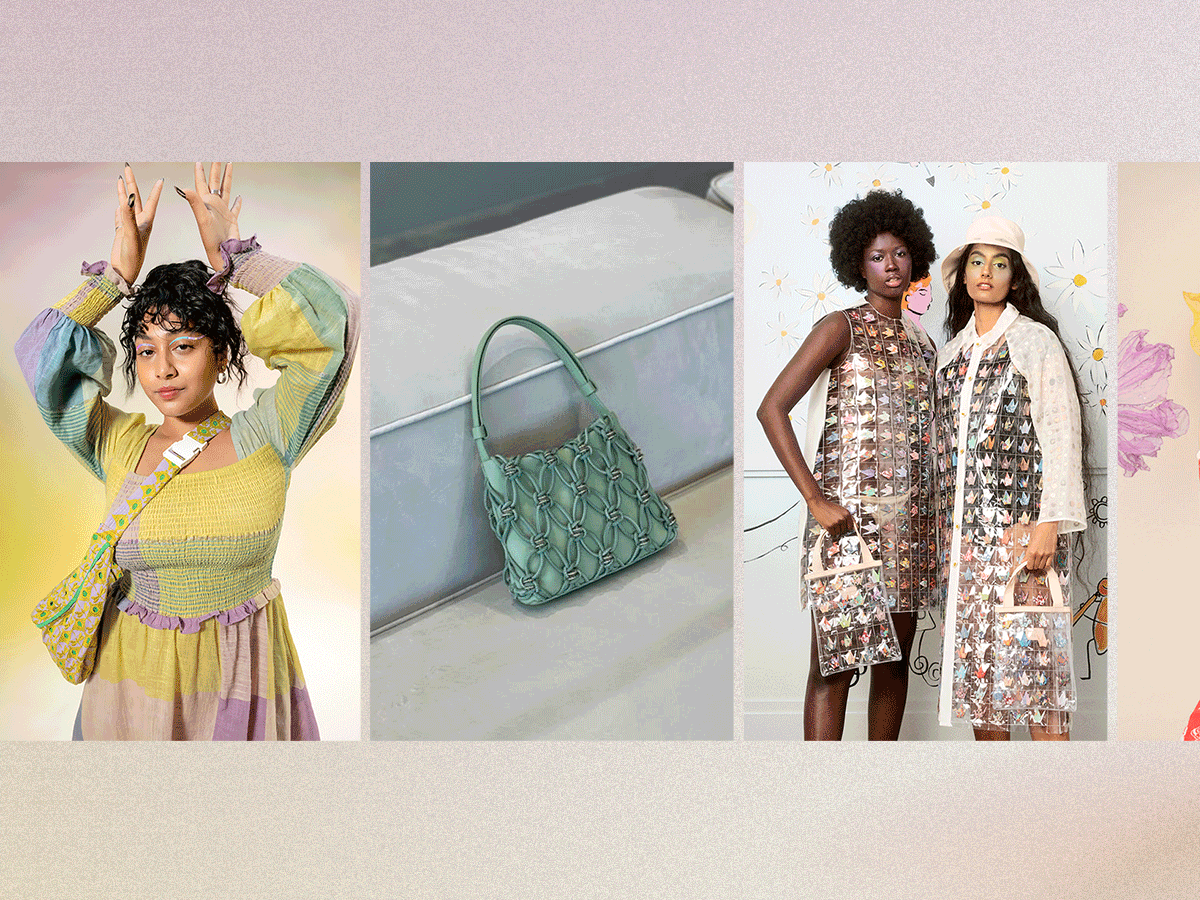
Asia has a vast and rich history when it comes to design, ranging from India’s natural fabric-dyeing techniques to China’s practice of silk production dating back thousands of years. But you don’t have to break out a history book to see how the continent’s sartorial past has influenced modern-day fashion. Rather, all you have to do is look at the collections of some of today’s most beloved and buzzworthy AAPI brands, many of which are heavily shaped by their designers’ unique heritages.
From Dauphinette designer Olivia Cheng’s usage of Chinese cultural symbols like koi carp fish, paper cranes, and the year’s zodiac animal to Abacaxi designer Sheena Sood’s work with handloom-woven fabrics like ikat and mashru, the designers highlighted below are using their platforms on fashion’s main stage to showcase the practices of their ancestors and come up with innovative ways to modernize the traditional for their loyal customers.
Keep scrolling to discover how Cheng, Sood, and more AAPI designers are bringing practices and designs from the past into the present.
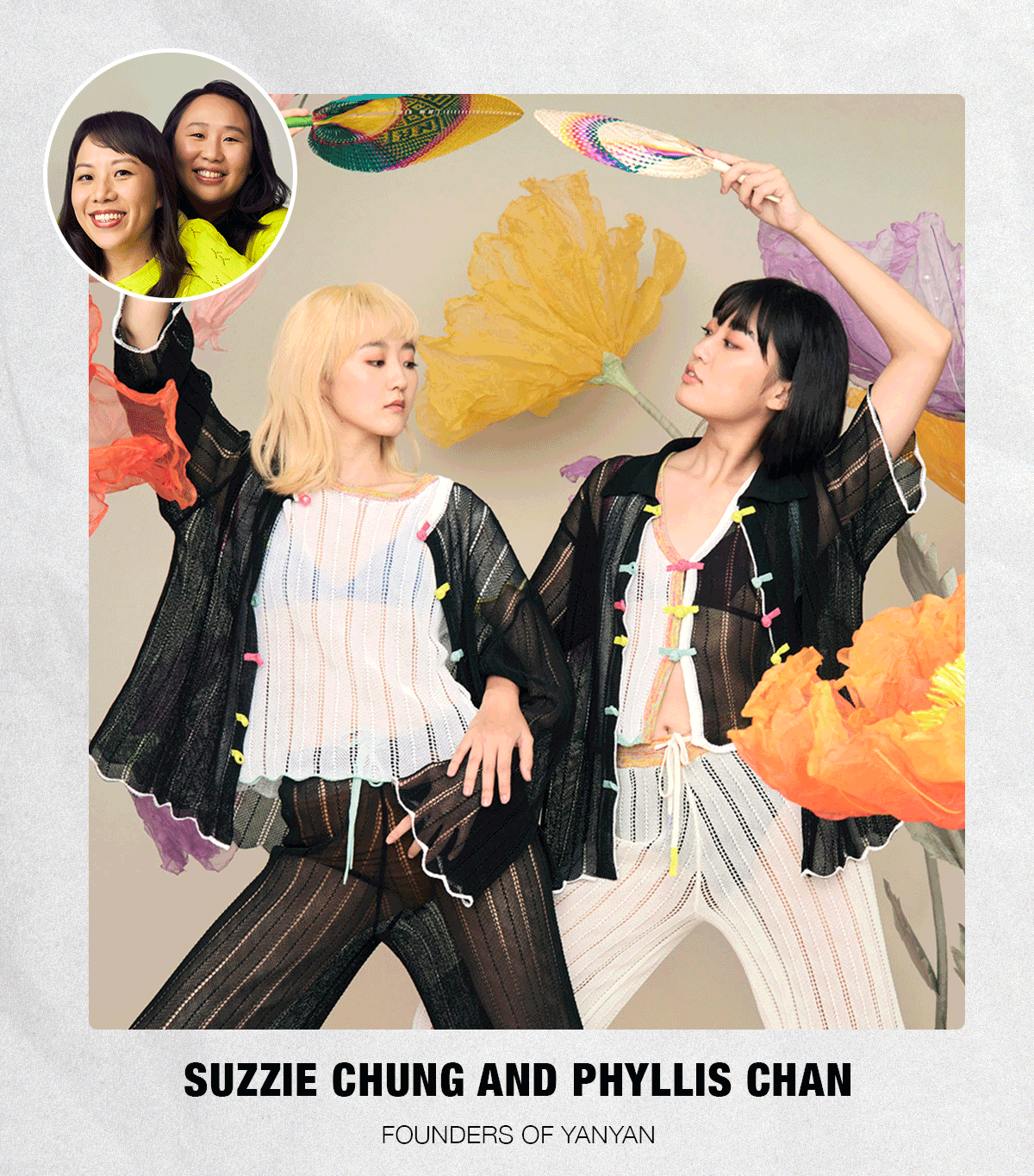
How much do traditional Chinese design elements play a role in your design process, and in what ways do they provide inspiration for YanYan?
Suzzie Chung: We find a lot of romance and fantasy from our culture and heritage. We love learning about the evolution of heritage clothing and studying the original uses of details, whether they are function or purely ornamental, and interpreting them in a modern setting. A lot of traditional jacquards and embroideries often relate to folklore and mysticism, and we love the drama and humor of those references.
What are some Chinese design elements that you’ve incorporated into YanYan thus far? Are there others that you’d like to work with in the future?
Phyllis Chan: I think we approach our traditional Chinese elements in a few ways. Sometimes, we want to share or reference something that we find really cute or interesting about our heritage that is perhaps less common to outsiders, such as the 百子圖 (drawings of a hundred children), mystic clouds (which are kind of “classic” themes in Chinese art), or little details like the knot buttons. Sometimes, it’s a reference to a certain time period or a design element that represents that to us, such as these mid-century iron-wrought doors or window frames that were common in our part of the world when we were growing up. Overall, I would say we try not to interpret the “traditional” in a literal way—we are very interested in the idea of how the West looks at us and the lens we use to view the West as well as ourselves.
How do you go about modernizing more traditional Chinese designs and practices when designing for YanYan?
Chung: Knitwear was not a very common medium historically used in China, so when we knit prints and motifs derived from traditionally woven jacquards and embroideries, the final effect is usually very different from the original reference. We also love to play with different textures and combining unusual colors. That being said, I think it is very important to distinguish the difference between “traditional” and what we do. While we do incorporate parts of our culture into our designs, we do not make “traditional” Chinese clothing. We also have to understand and respect the context and history of the clothing, motifs, and symbolisms that we do reference. In general, we just like to use elements which are fun and cute and auspicious since we want our clothing to make people smile!
Why was it important for you both to incorporate your Chinese heritage into the brand?
Chan: We’re not traditionalists, but we wanted to create something personal to us with references that are a little different from the generally Western aesthetic in the market. This was not a strategic move to enter the Western market. It’s just that the Western aesthetic is what the norm is all over the world, even in Hong Kong.
Chung: I think I just like working to my strengths. I prefer to reference my own culture because it is a genuine expression of my experience and understanding of it, and I believe there must be other people in my city and in the world that resonate with [that]. I’ve also noticed that when our technicians and embroiderers work with elements they are more familiar with, like tailoring the collar of our cheongsams or embroidering our cranefish sweaters, they are able to inject an extra flair and personality, which makes our products more special to me!
Have you learned anything new about historical design elements/practices from China while creating and designing for YanYan?
Chan: Definitely. What’s fun about our job is doing the research into the hows and whys [in terms of the way] a certain element or detail was designed or seeing the evolution of something through the years or even why it’s still so prominent today.
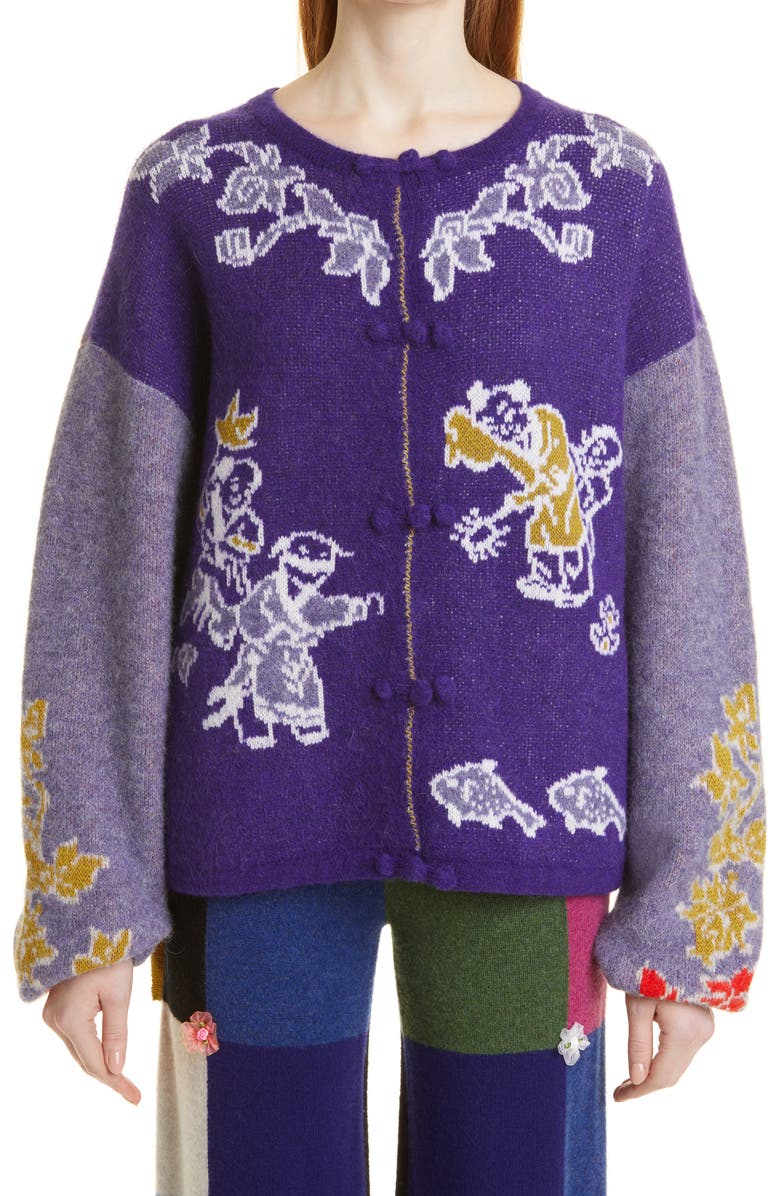
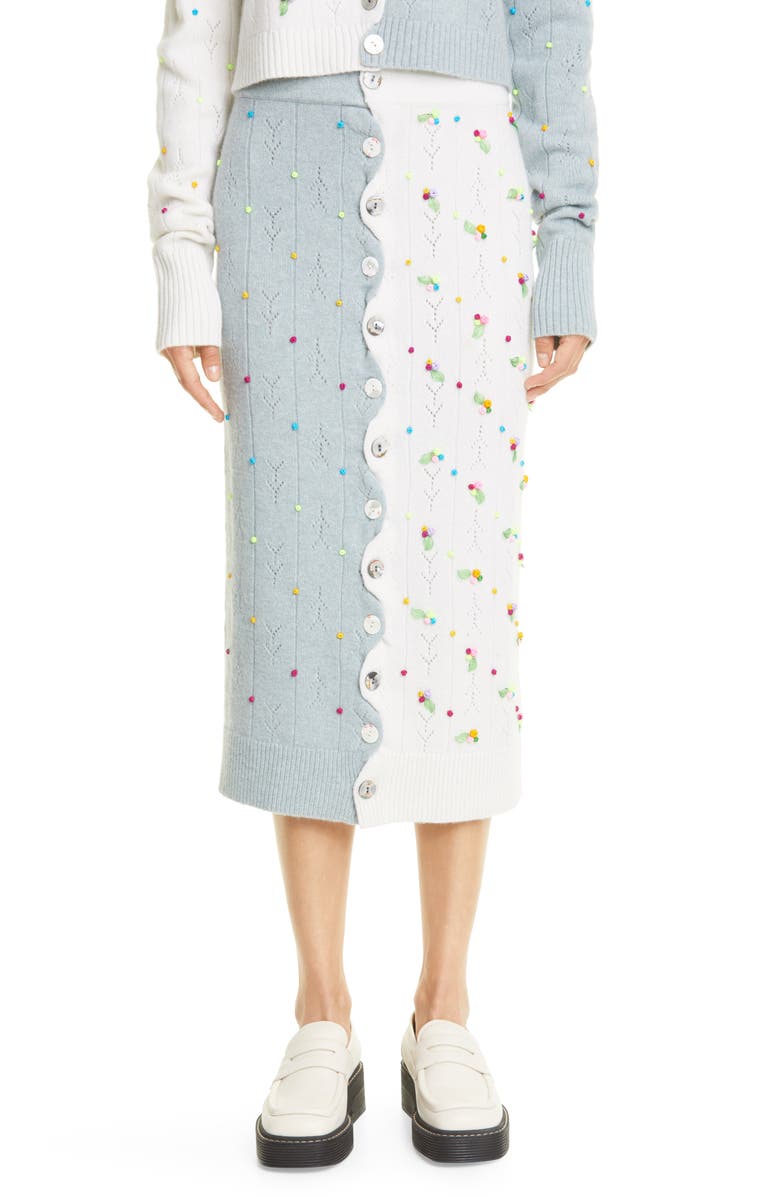
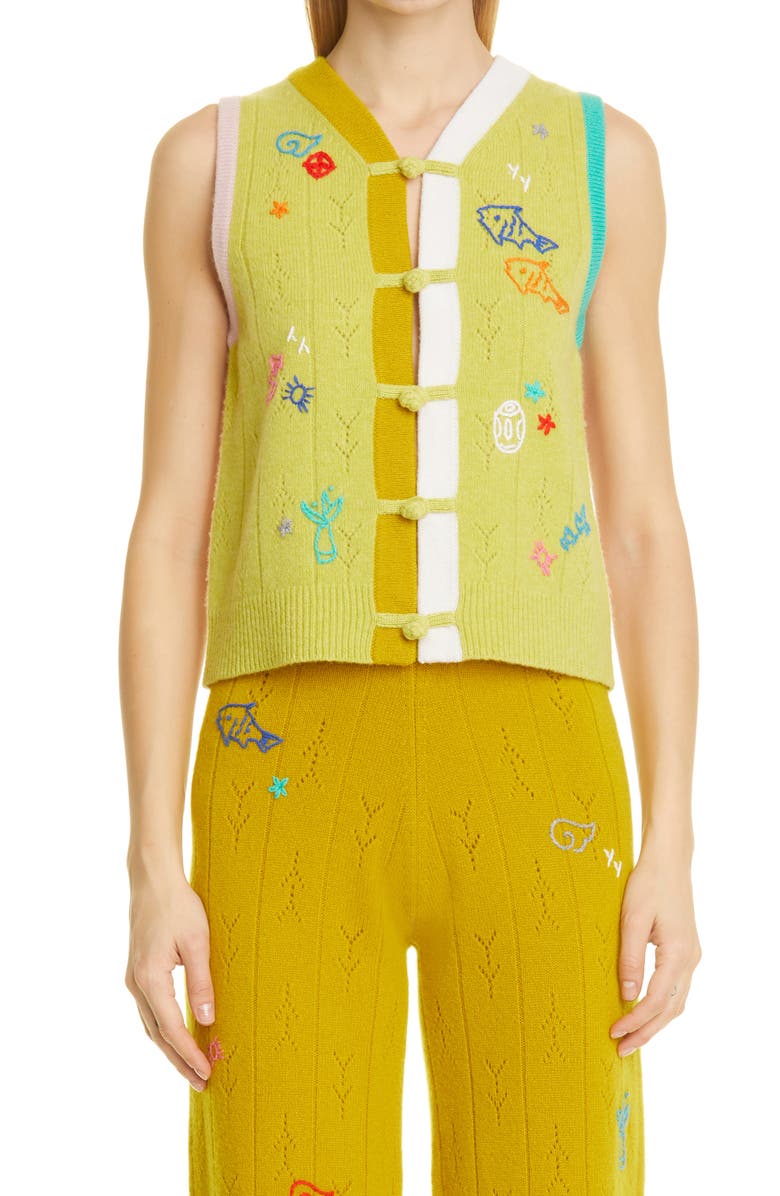
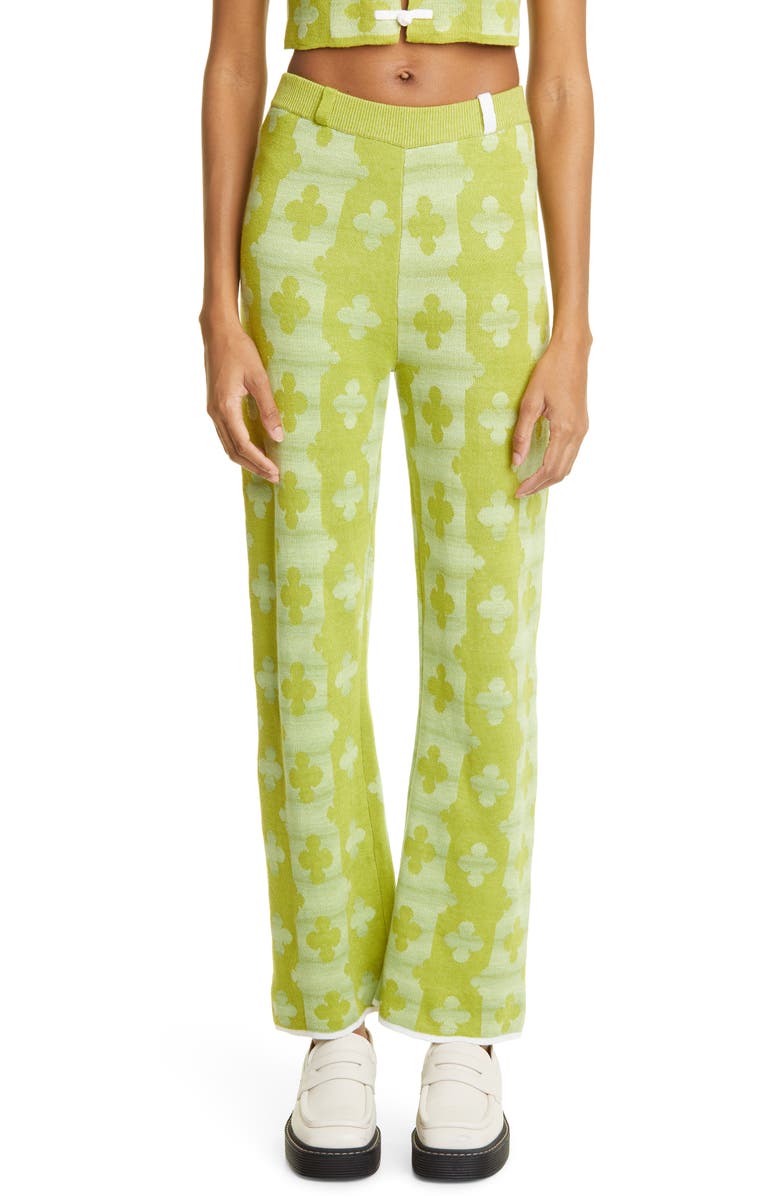
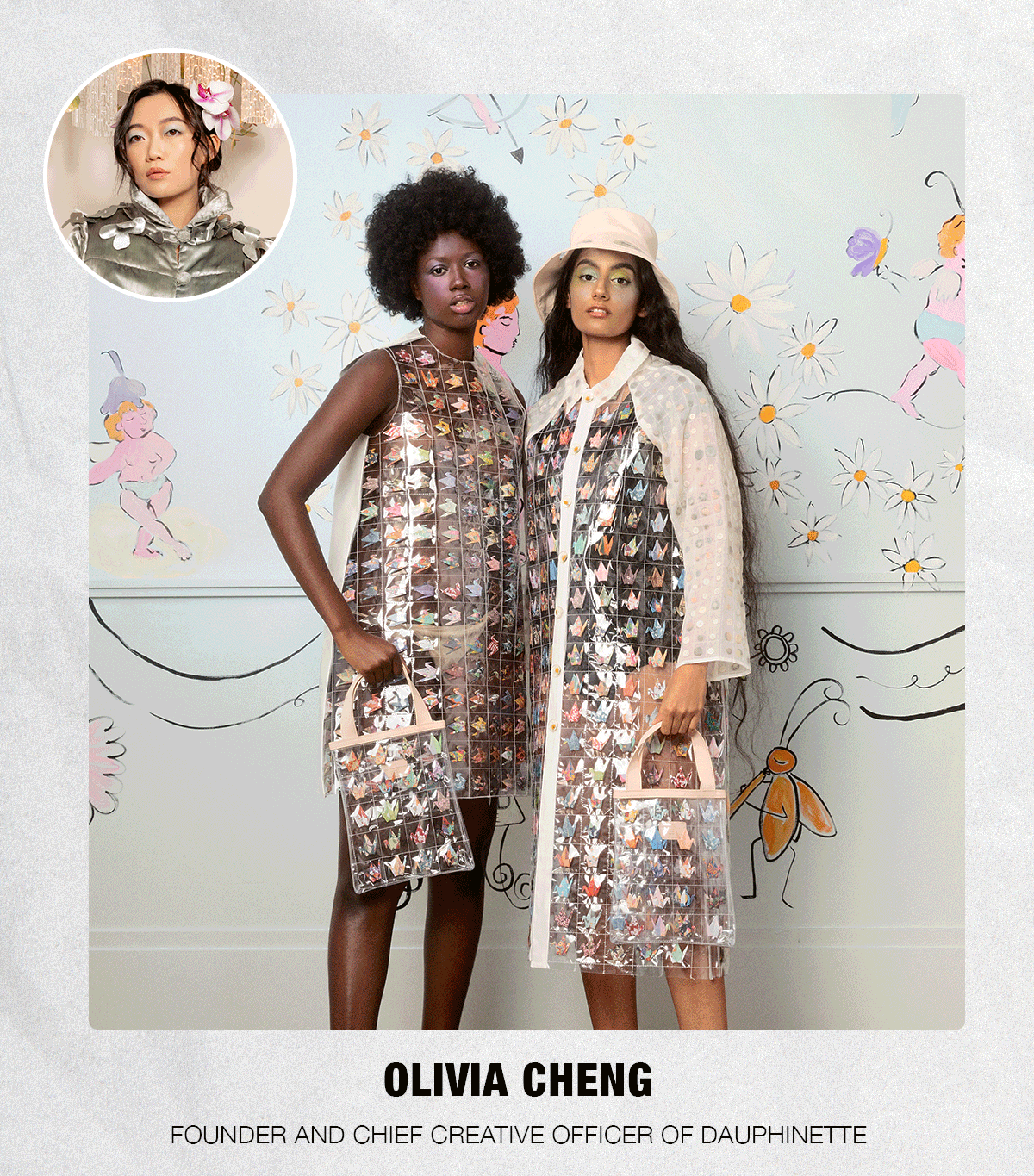
As the daughter of two Chinese immigrants, does your Chinese heritage play a role in your design process and inspiration at all? How so?
Most definitely! My first language was Mandarin, and in the first decade of my life, I was mainly exposed to Chinese culture, art, and music. My mother collects chinoiserie porcelain wares, and our kitchen was filled with them. I used to sit on the floor at night and rifle through vintage bowls and plates simply to admire the painted details and handiwork. I’ve used many references to Ming porcelain and chinoiserie in our prints. My parents also grew up in China during the 1960s to 1980s amid a lot of social change and economic difficulty, and their mindset of “doing the most with what you have” was absolutely instilled into me. Without that influence, I don’t think I would have approached starting my own brand with any of the same values or concepts.
One of the first items I saw of yours was the Koi Koi Bag, a vintage bag with hand-painted koi carp fish on it, which are said to represent good fortune in Chinese culture. Are there other pieces from your archives or current collections that, too, have ties to your Chinese heritage? What do these symbols represent to you, and what made you decide to incorporate them into Dauphinette?
Ah, yes, love and miss the Koi Koi Bags! [More recently] 2022 is the year of the tiger, which is also my zodiac animal. It’s a difficult connection to describe without overly romanticizing [it], but I’ve always felt a deep connection to tigers. As a result, we’ve been incorporating these motifs into a lot of our current and upcoming work. To me, tigers represent resilience, courage, and, of course, strength.
Why do you think it’s important to incorporate ties to your heritage into your work?
As an artist but also as a small-business owner, honesty is integrity, and there is no better, more direct, and more poignant way to honor one’s work than through interpretations of our own identities. For me, trying to design outside of my heritage would feel disingenuous, and I think simply for the quality of my work it’s important to be self-aware and honest with myself about how my cultural experiences can influence the designs I produce today.
What are some of the ways that you like to modernize or put your own spin on more traditional symbols, materials, or practices when incorporating them into Dauphinette collections?
As silly as it might sound, I find that traditional concepts have their own way of subconsciously reinterpreting themselves. When illustrating or designing, what enters through the brain flows out through the heart and the hand. Especially when drawing or painting, I notice that, even if I’m using a reference (for example, to get the shape of an animal anatomically correct), the resulting figure is still completely different than the reference. By letting inspirations flow through my mind in their existing state, the creative result is something that feels deeply original to myself.

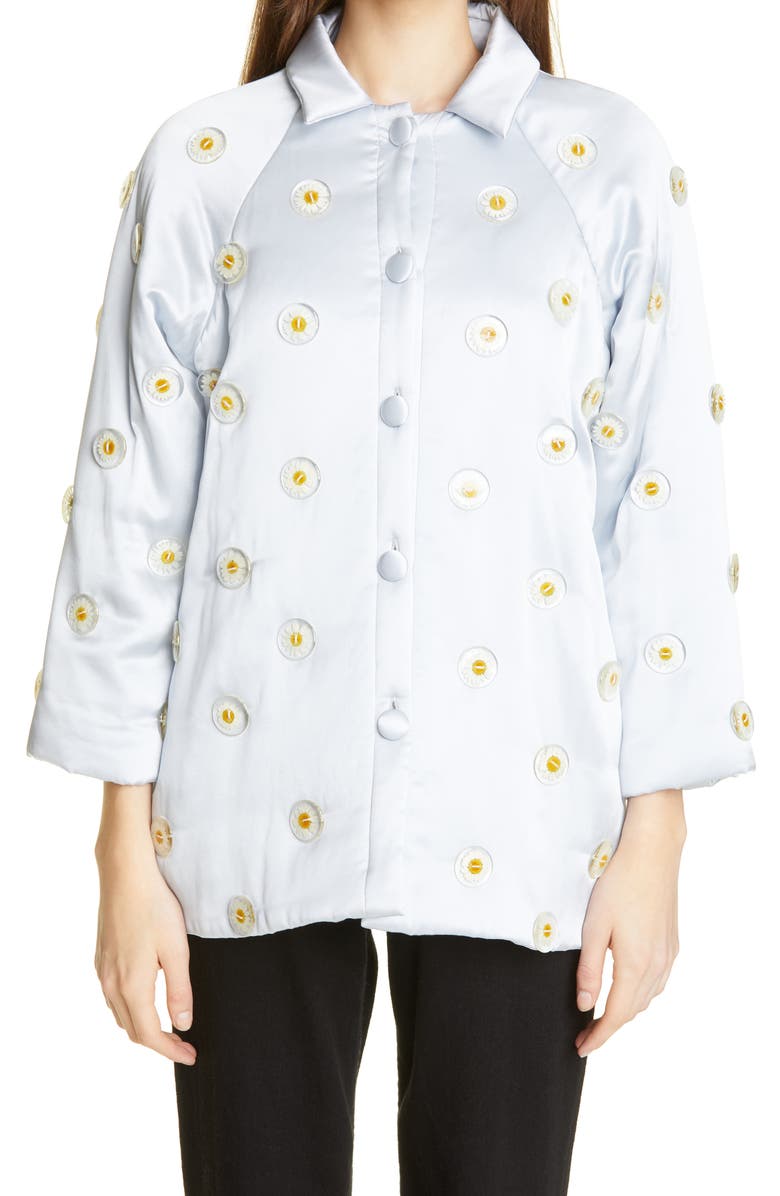
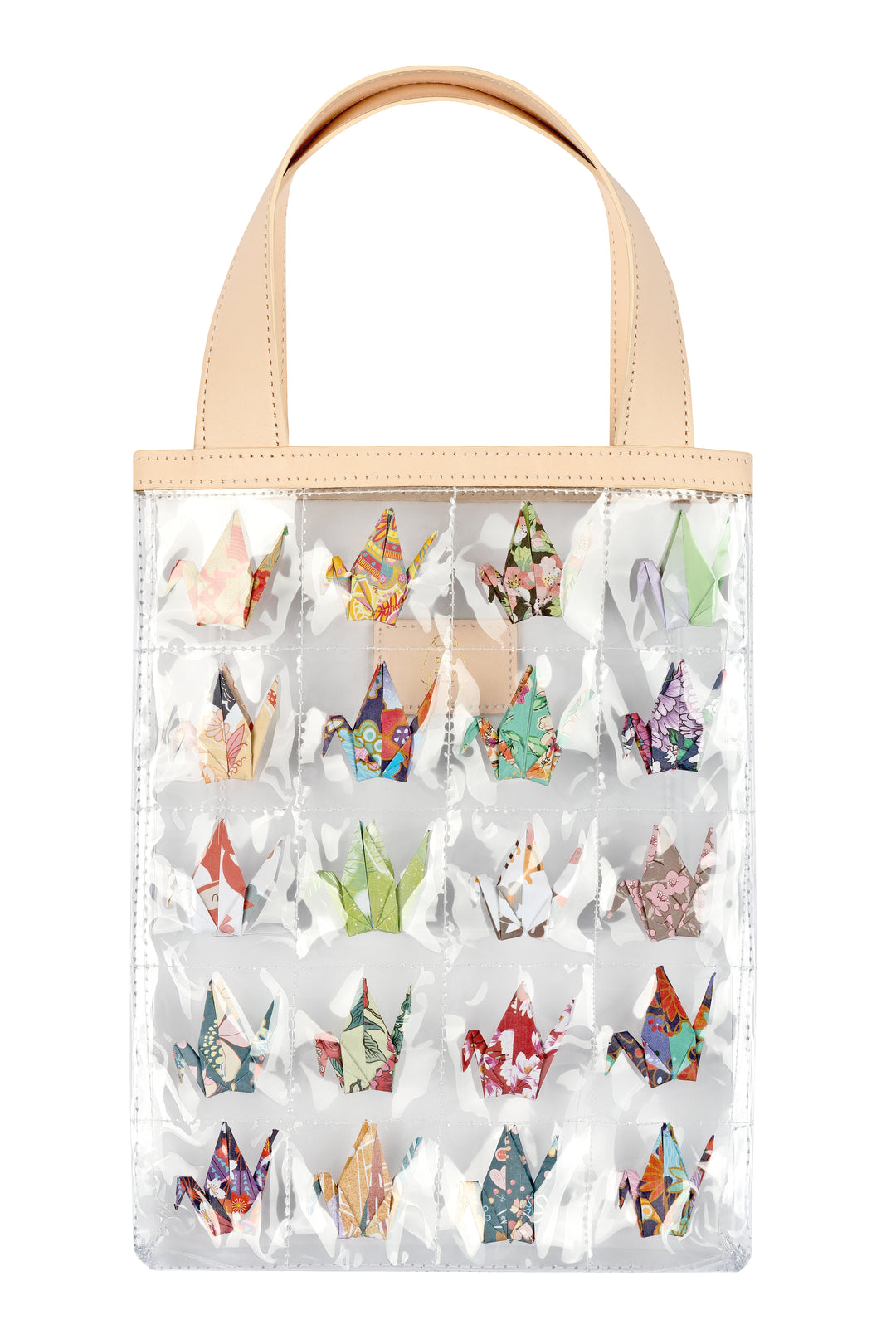
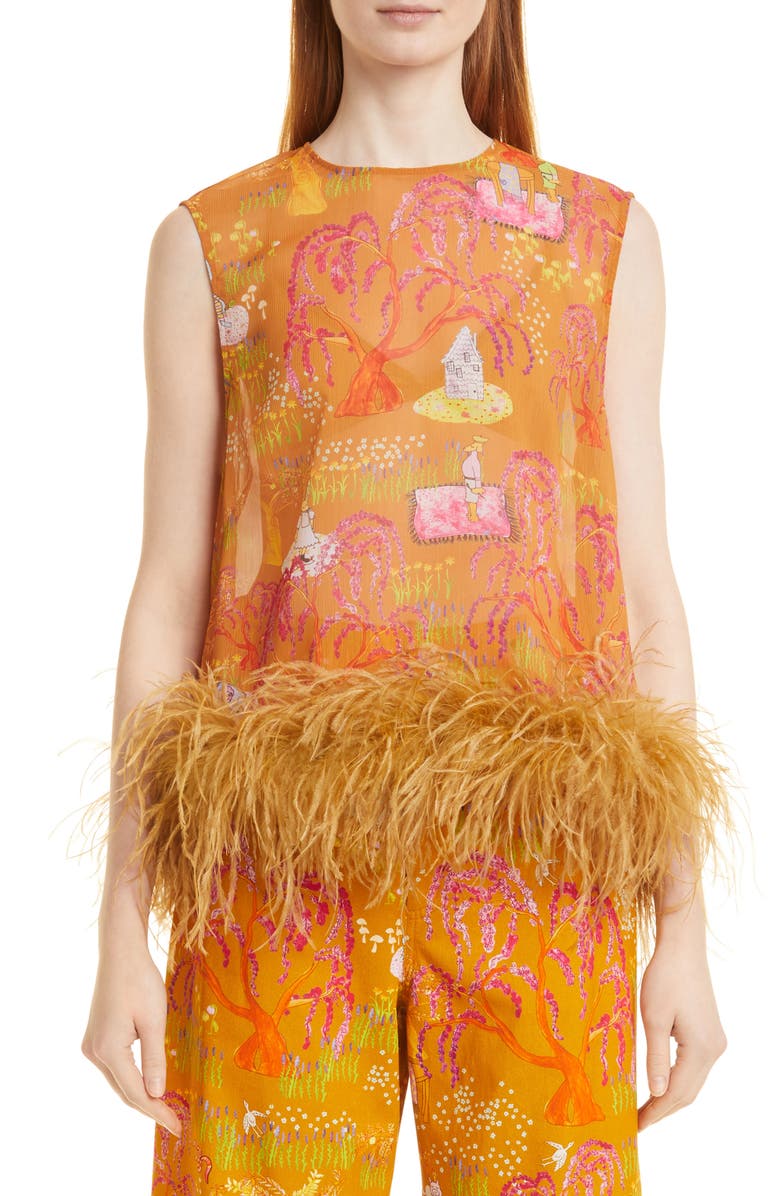
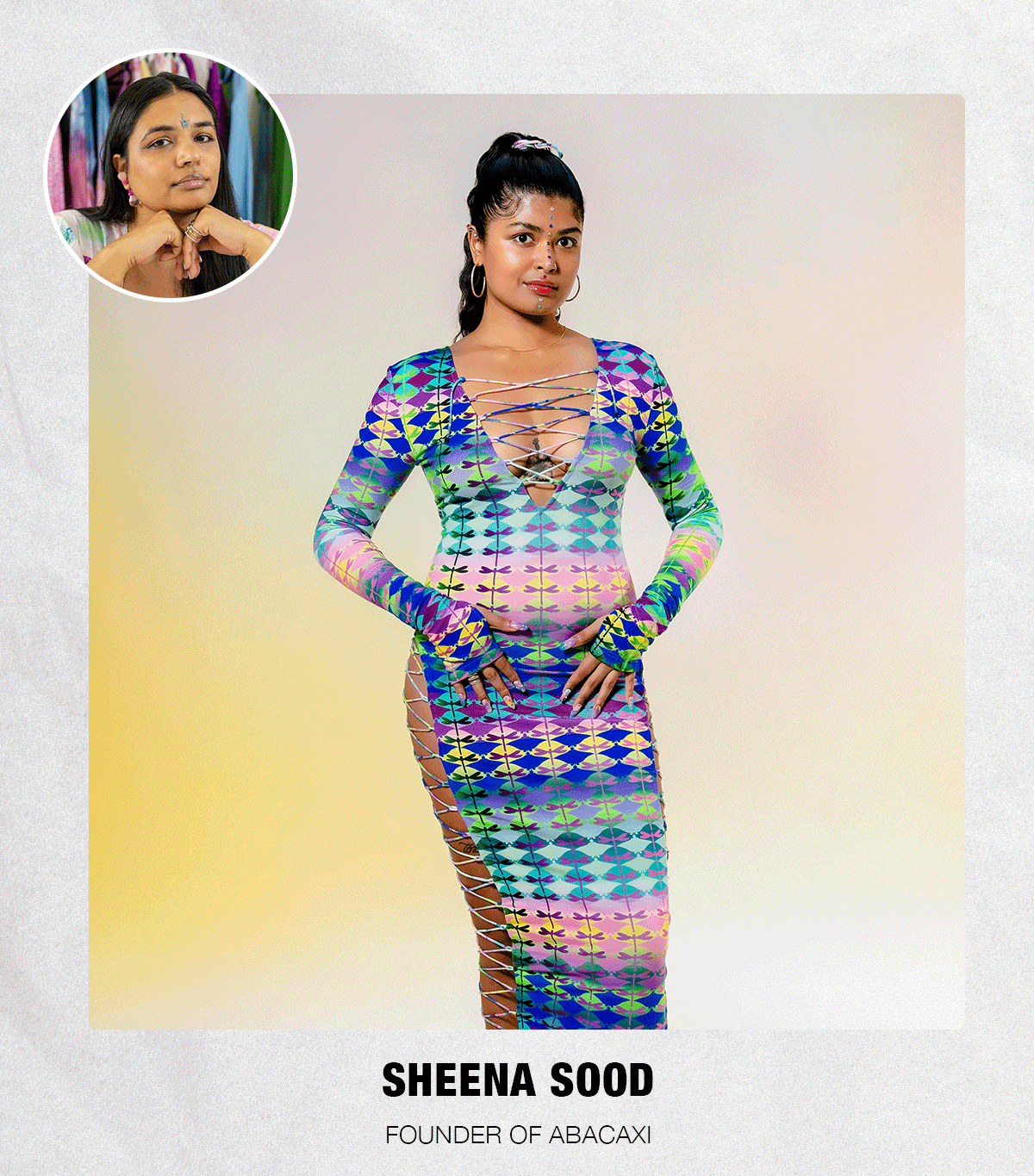
Tell me a bit about yourself and your brand. How did you get into fashion design, and what were some of your initial points of inspiration?
Growing up, I loved shopping for fabrics during our family trips to India and was fascinated by the process of custom garment-making—choosing a fabric and silhouette and taking it to the tailor, the embroiderer, etc. I studied visual art in college and often incorporated fabric, hand-embroidery, and beading in my paintings, which led me into studying textile design. Learning how to weave, spin fiber into yarn, dye fabric, and even create homemade natural dyes later served as a basis for all of the custom textile development work I do now for my line. My heritage, the several different forms of traditional Indian dress, and the ways in which I saw people wearing bright, saturated color and embellishment back home were always something that really inspired me as a designer and as an artist. An obsession with color is something that unites my design work and visual art as well.
How does your Indian heritage play a role in your design process and inspiration?
I started Abacaxi because I wanted to work with so many different traditional Indian handmade and handloom textile techniques—many of which are at risk of disappearing—[and bring them] into contemporary fashion and our everyday. I was always fascinated by the breadth of different embroideries, types of weaves, and intricate forms of beading that were possible in India, and it remains one of the main points of inspiration in my work today. There are so many regional and local heritage processes that I want to explore. Even after designing several collections over the years now, I feel I am just getting started and scratching the surface. The kaleidoscope of possibilities there is so rich.
What traditional Indian practices and techniques do you put to use when producing your collections for Abacaxi?
I have designed with handloom woven fabrics such as ikat (when the warp or vertical threads are resist-dyed) and mashru (a beautiful type of weave from Gujarat where shiny silk shows on the face of the fabric while cotton grazes the skin on the inside). This season in my Stingray collection, which is available now for spring/summer 2022, I worked with skilled handloom weavers in Tamil Nadu, India, to create a custom yarn-dyed plaid with four different plant-dyed yarn colors and small stripes of rainbow Lurex. The result turned out brilliantly. It is a color-block design with a very wide warp without a repeated stripe on the warp. I intentionally designed it with overlays so you get to see several different shades of color with just four yarn colors. I actually just visited the weavers there this last month, and they told me it was the most difficult design they’ve ever had to execute.
Some of the traditional embroideries I’ve been working with are shisha (mirror work), phulkari (silk floss thread embroidery from Punjab), ari work, eyelet embroidery, and zari. Tie-dye techniques are another big one. I recently just launched a new website for Abacaxi, and now, you can explore each of these techniques, see videos and photos of the processes, meet the makers, and even shop by textile technique or by collection concept.
Another traditional Indian practice which I’m now proud to say we are working with is actually the ancient way of cotton farming, also known as regenerative cotton farming, through a partnership with Oshadi. Our future cotton fabric productions will use this farmed fiber, and we are also incorporating more and more natural dyeing processes from India.
How did you learn about these practices and techniques?
I didn’t have formal training in any of the Indian textile techniques, but I have realized that I learned a lot from my mom and other family members. I think the knowledge of textiles was passed down to me. My mom was always very particular about the type of fabric she would wear, and when we had traditional outfits made for weddings in India, I learned about some of the different types of embellishments. Then, because of my passion and interest in the topic, I did a lot of research on my own. I’m grateful to have been able to travel not just around parts of India but to several different places around the world now researching artisanal textiles.
What does it mean to you to be able to bring these traditional Indian practices and designs to new audiences with your work?
It’s very meaningful to me and obviously quite meaningful and valuable to the makers—the weavers, artisans, cutters, sewers, and all of the people behind our productions in India. The work has a strong impact, and when you purchase one of our pieces, you’re not just getting a quality, handmade garment, but [you] are also supporting makers who are continuing an ancestral tradition. Every transaction has meaning by giving value to the work.
What are some ways that you modernize more traditional practices when incorporating them into Abacaxi collections?
One example is my use of shisha work or mirror work. This is an embroidery technique using small, usually round mirrors that are embedded into the embroidery, traditionally from Rajasthan and Gujarat. Oftentimes, you’ll see shisha in wall hangings or on very typical tunics or kurtas. My take on it was to do it on a rib-knit jersey fabric, and I added hand-beaded fringe for a 3D effect. I have a shisha knit shrug set, dresses with a line of mirrors down the front, and now a shisha pouch purse. I think to see this technique on a stretchy knit instead of a stiff cotton is one way to sort of modernize it or bring it into more everyday contemporary wear.
Another great example is the Stingray color-block custom weave I spoke about. Yarn-dye plaids and striped cottons are very typical of South India— madras plaids are probably the most widely known example—but my take on it was to create a wide color-blocked warp design that is totally different on one end than on the other, thus bringing this traditional handloom technique into another level from a graphic and a design perspective.
Oftentimes, in my design process, I start with the techniques and fabrics I want to use, and the inspiration or concept for the collection comes through, and I’m designing the textiles and putting together the palette and sketches. So the techniques themselves are often the basis for the inspiration.
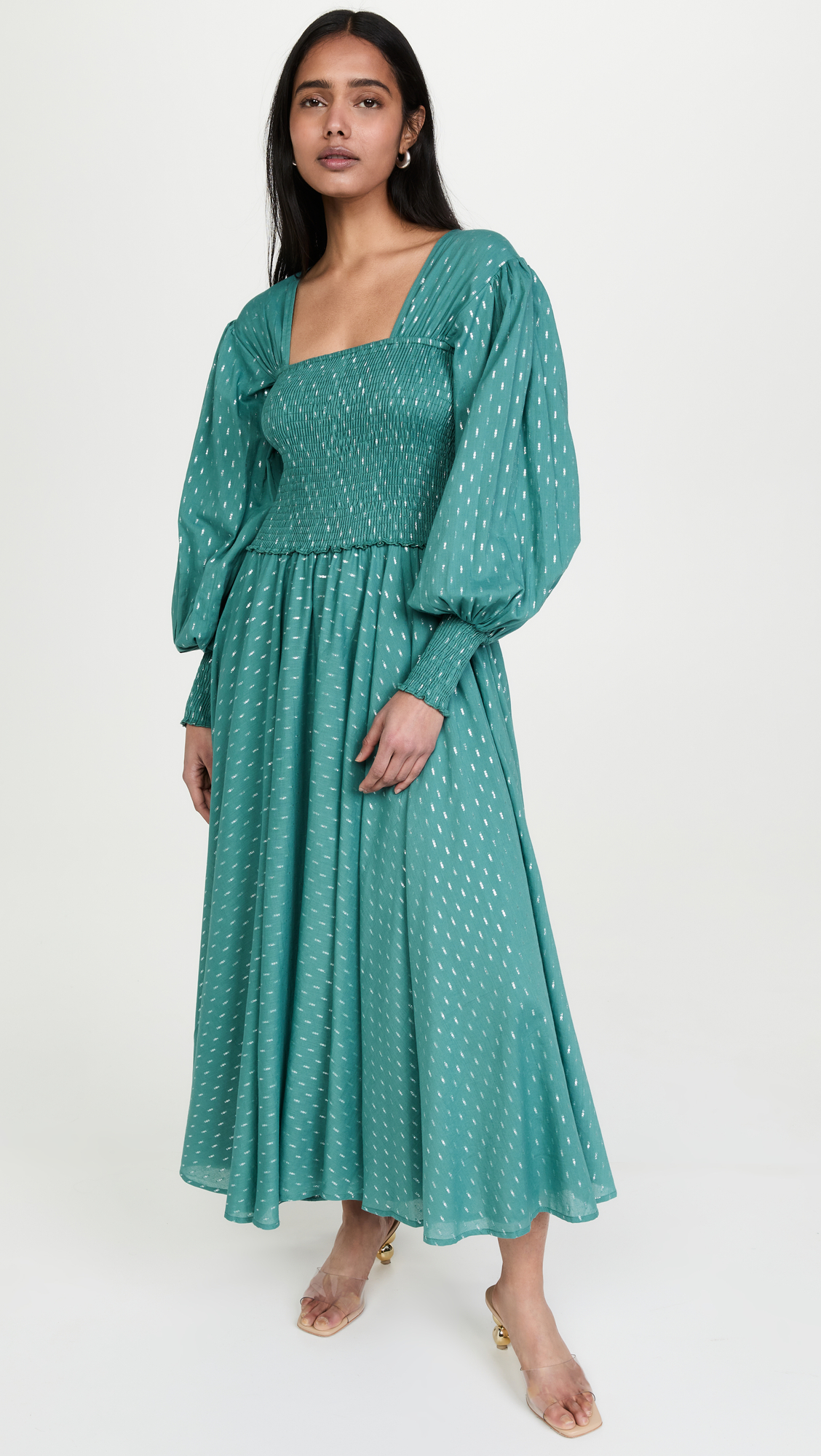
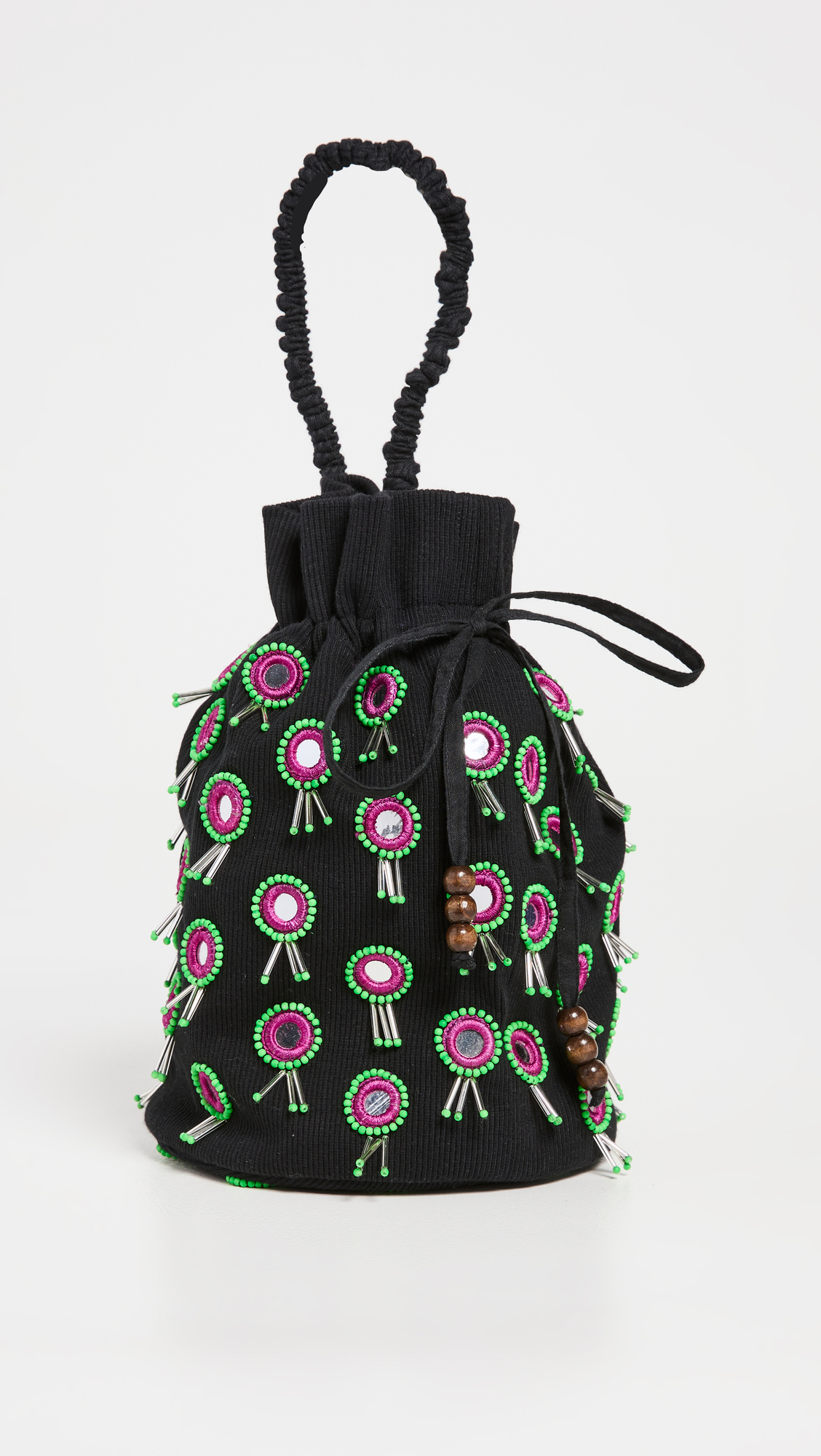
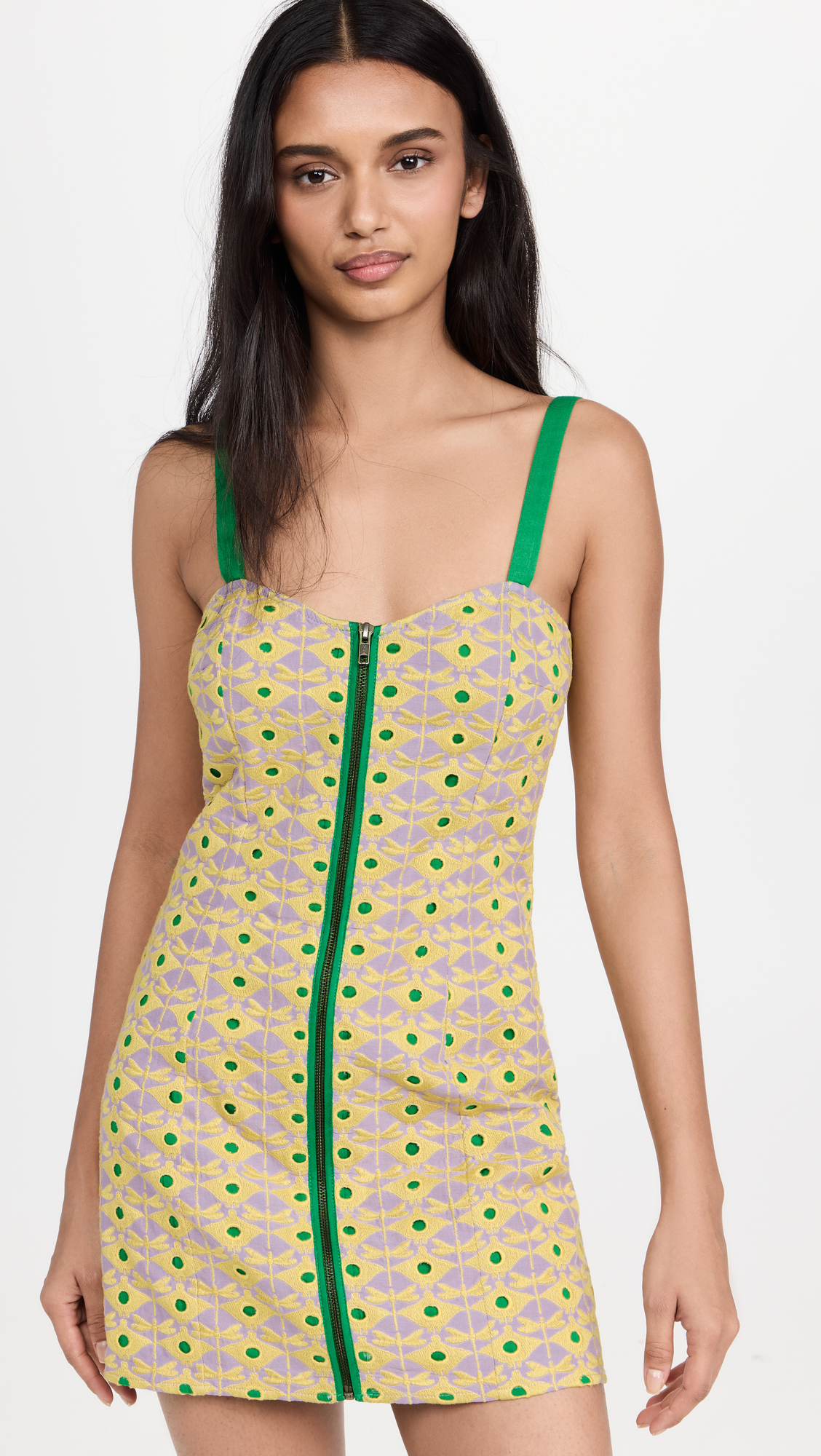
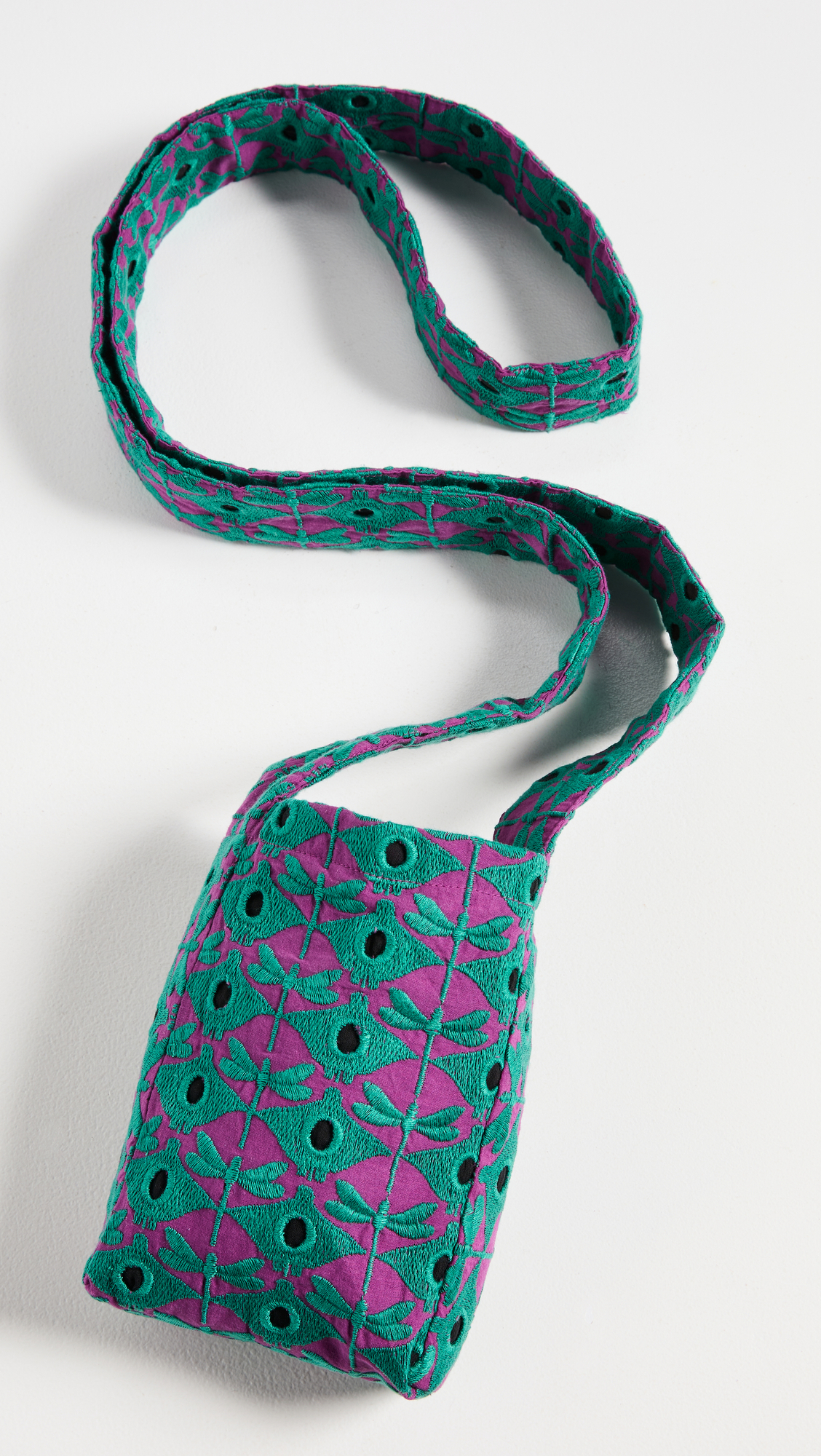
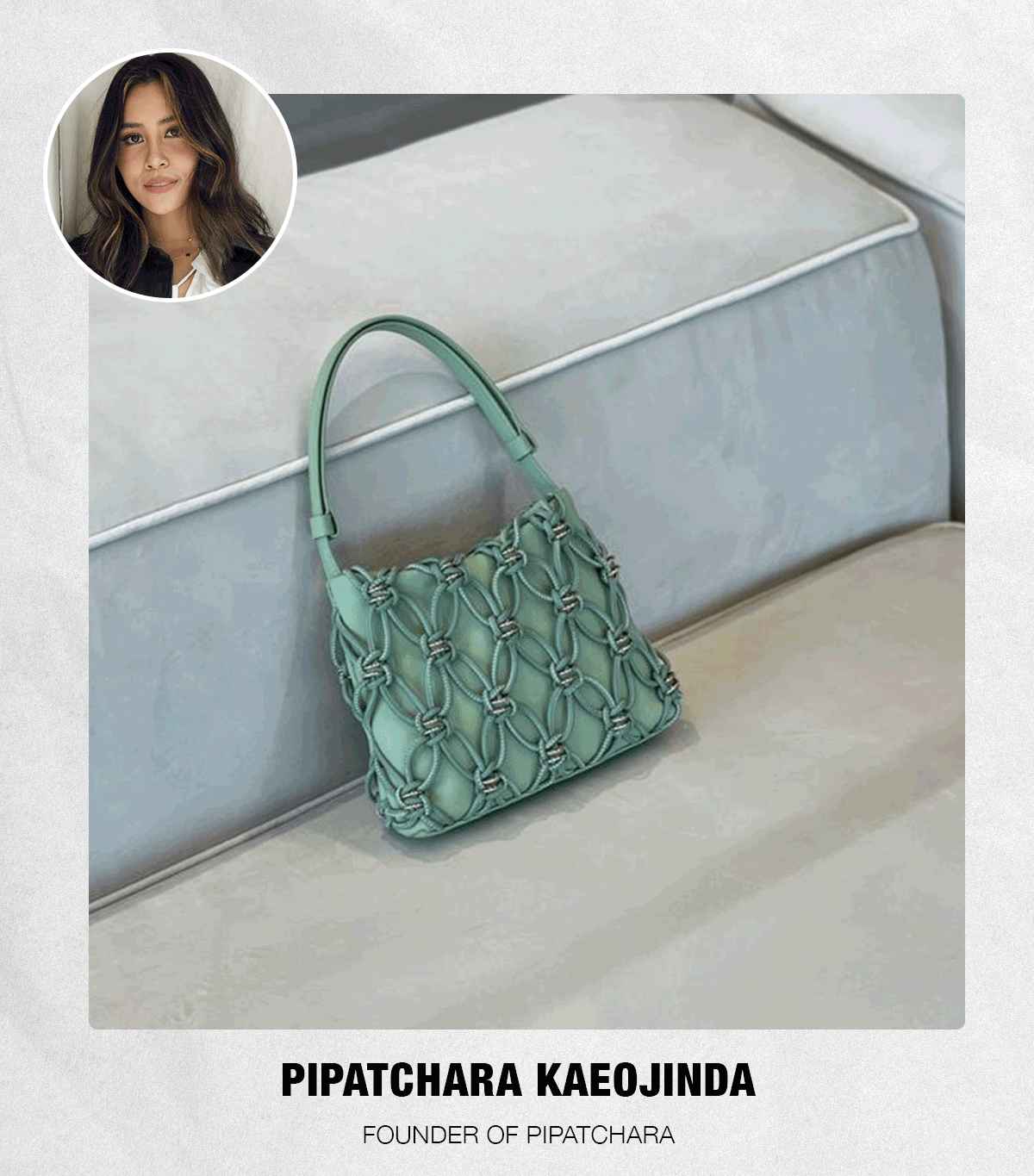
Tell me a bit about yourself and your brand. How did you get into fashion/accessory design?
I previously worked for over a decade in fashion design, production, and printmaking in New York and Paris before moving back home to Thailand. My sister Jittrinee was head of sustainability at Unilever in Thailand prior to the brand’s launch and is very well versed in sourcing and teaching sustainable practices. We both have a strong passion for crafting, especially for the art of macramé, a form of textile produced using knotting techniques. Our mission is to build a community to create jobs and extra income in the rural areas of Thailand by teaching local communities how to macramé, knot, and weave with various materials.
What were some of your initial points of inspiration for Pipatchara?
We were inspired by the beauty and craft of the macramé technique. Jittrinee and I both felt a strong connection and were drawn to the beauty of the craft. We wanted to find a way to incorporate this artistry into daily life through our designs and make it an everyday staple.
Macramé plays a huge role in your design process. Can you tell me about the practice’s history and its ties to your Thai heritage?
We have always had an appreciation for arts and crafting, which stemmed from early childhood, as our mother was an artist. Thai people are often taught similar crafting and weaving techniques to macramé growing up, as it is connected to our culture and historically linked to Thai people’s livelihood and the environment. We learned macramé when traveling to Morocco together about four years ago on an inspiration trip, and we immediately gravitated to the beauty and natural elements it symbolizes, including delicateness and wisdom.
What does it mean to you to be able to bring this traditional technique to new audiences with Pipatchara?
We hope incorporating the concept of community crafting and macramé into the brand helps to redefine, modernize, and sustain these traditional techniques. We want everyone to appreciate the Thai people’s contributions to art and fashion.
Why do you think it’s important to incorporate ties to your heritage into your work?
My sister Jittrinee said to me early on in this journey, “If you want to do something big, do it for the communities or more people, not only just for yourself,” and that really resonated [with me], so it became our brand’s ethos. Every time we visit with the villagers, we are so happy to see all those proud faces that resemble ours. They are so proud to see their products around the world, and it is incredibly empowering for them and us to be a part of it. That sense of fulfillment is such a special part of this brand.
How do you go about modernizing this traditional technique when designing for Pipatchara?
It is a creative process that takes lots of research and testing. We first make sure that the designs are functional and well-made, and then we focus on materials and sustainable production. We then make sure that the macramé components are consistent in construction and symmetry.
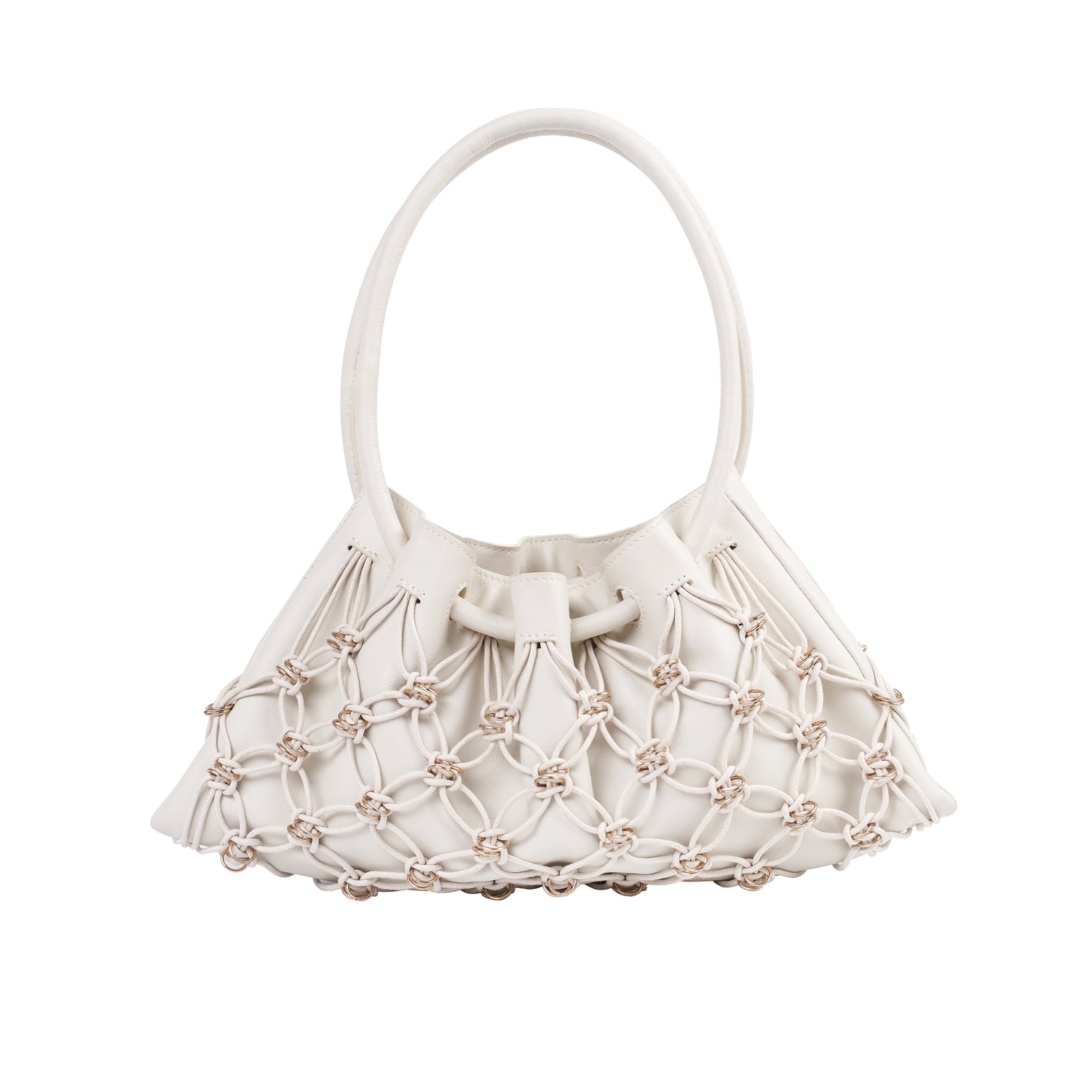
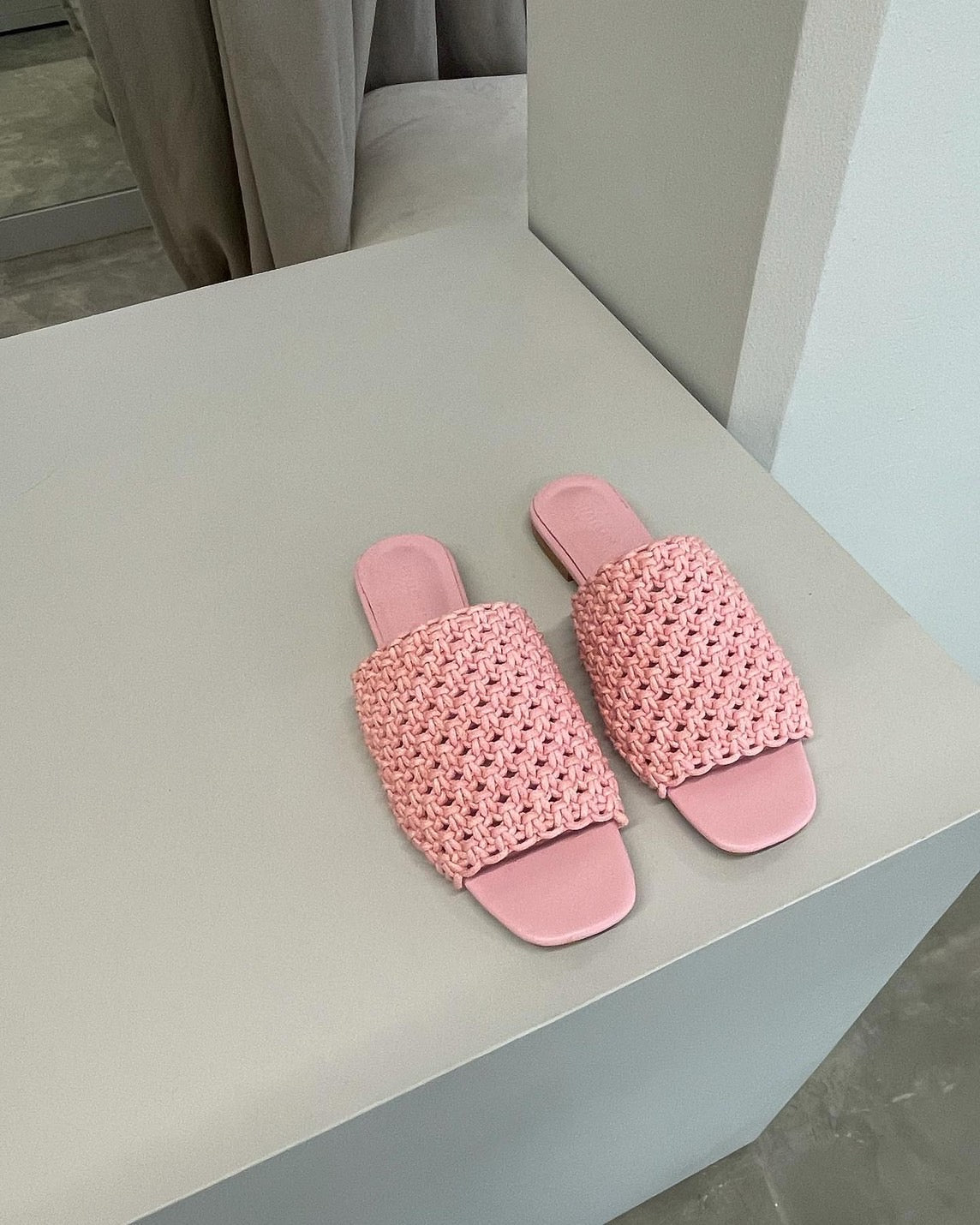
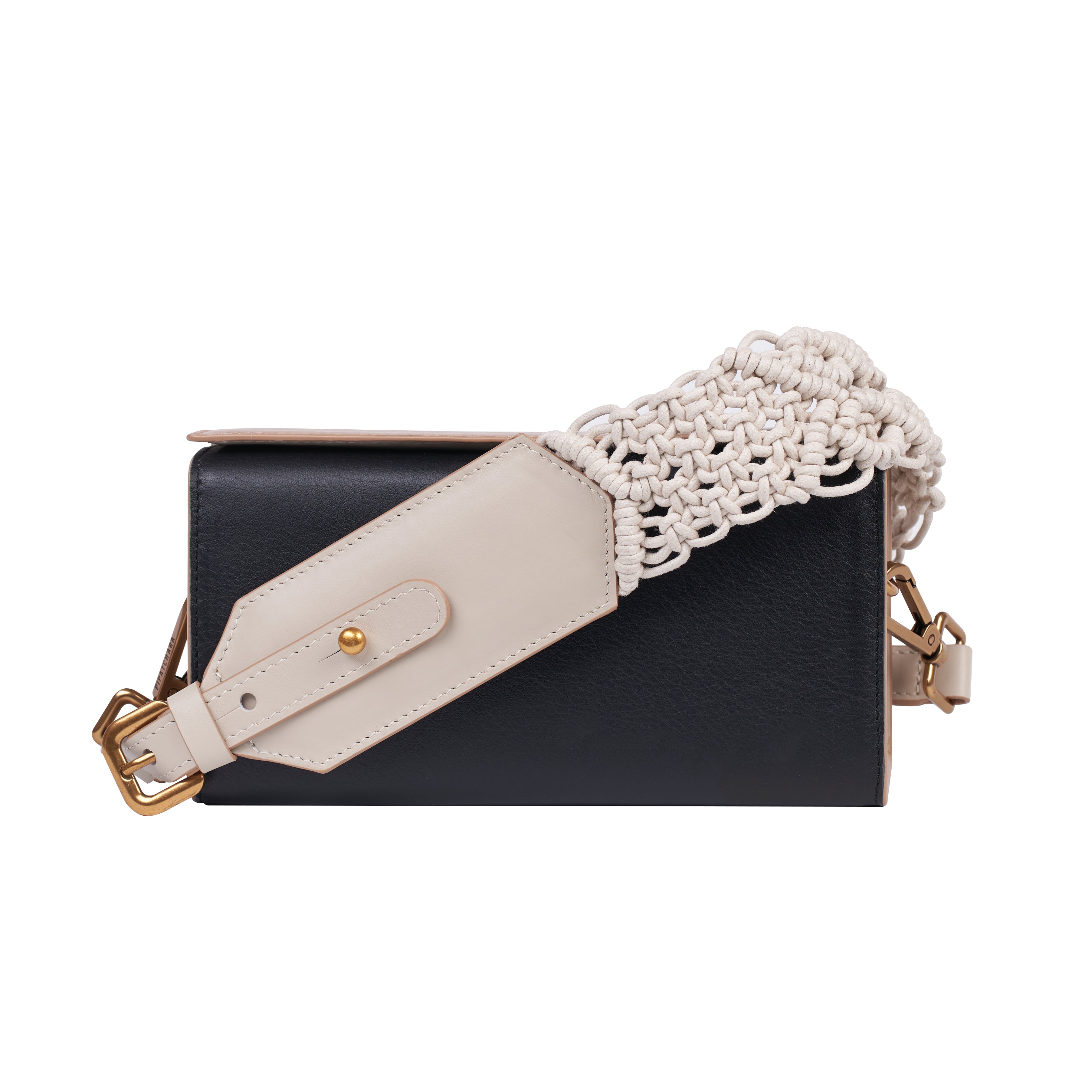
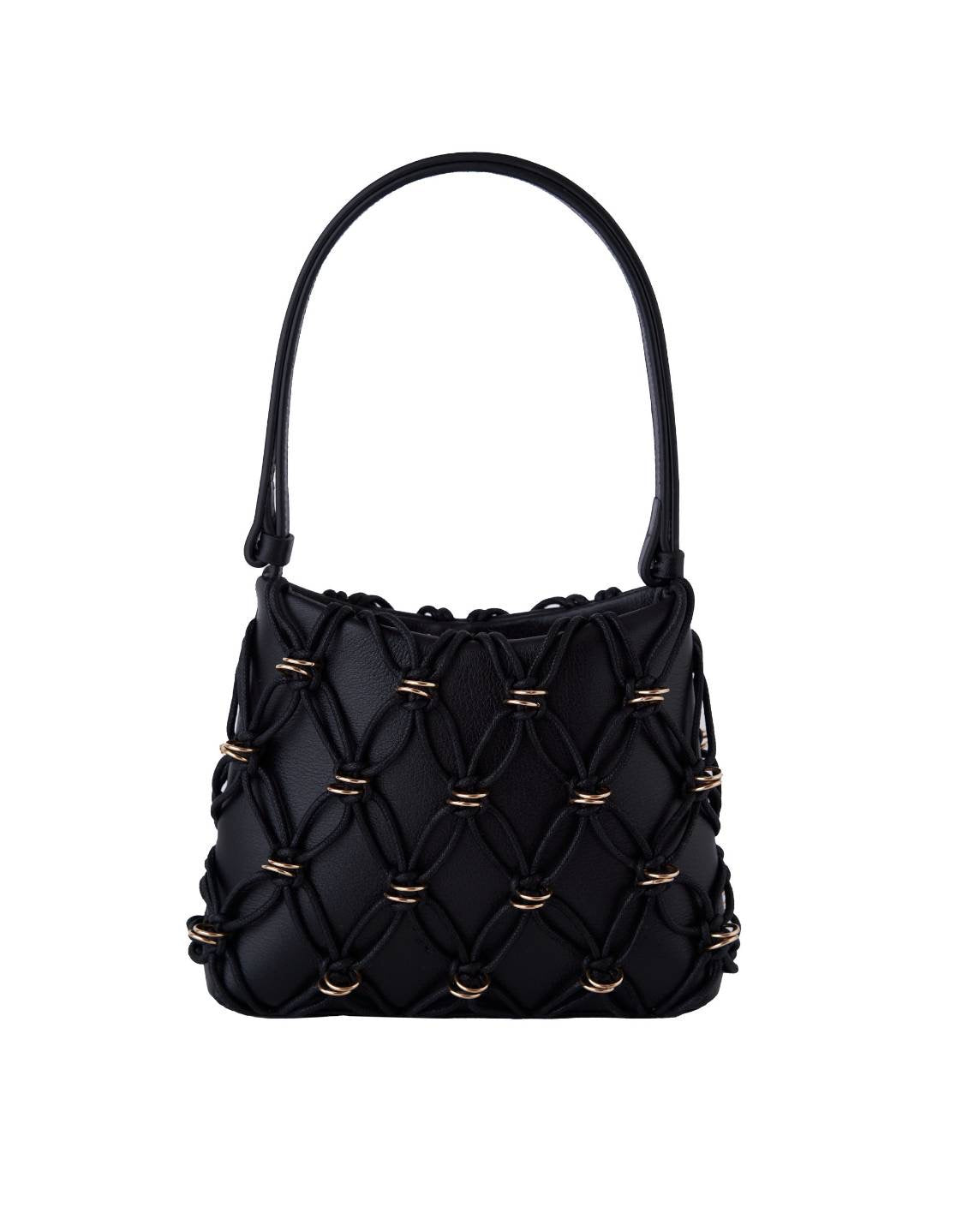
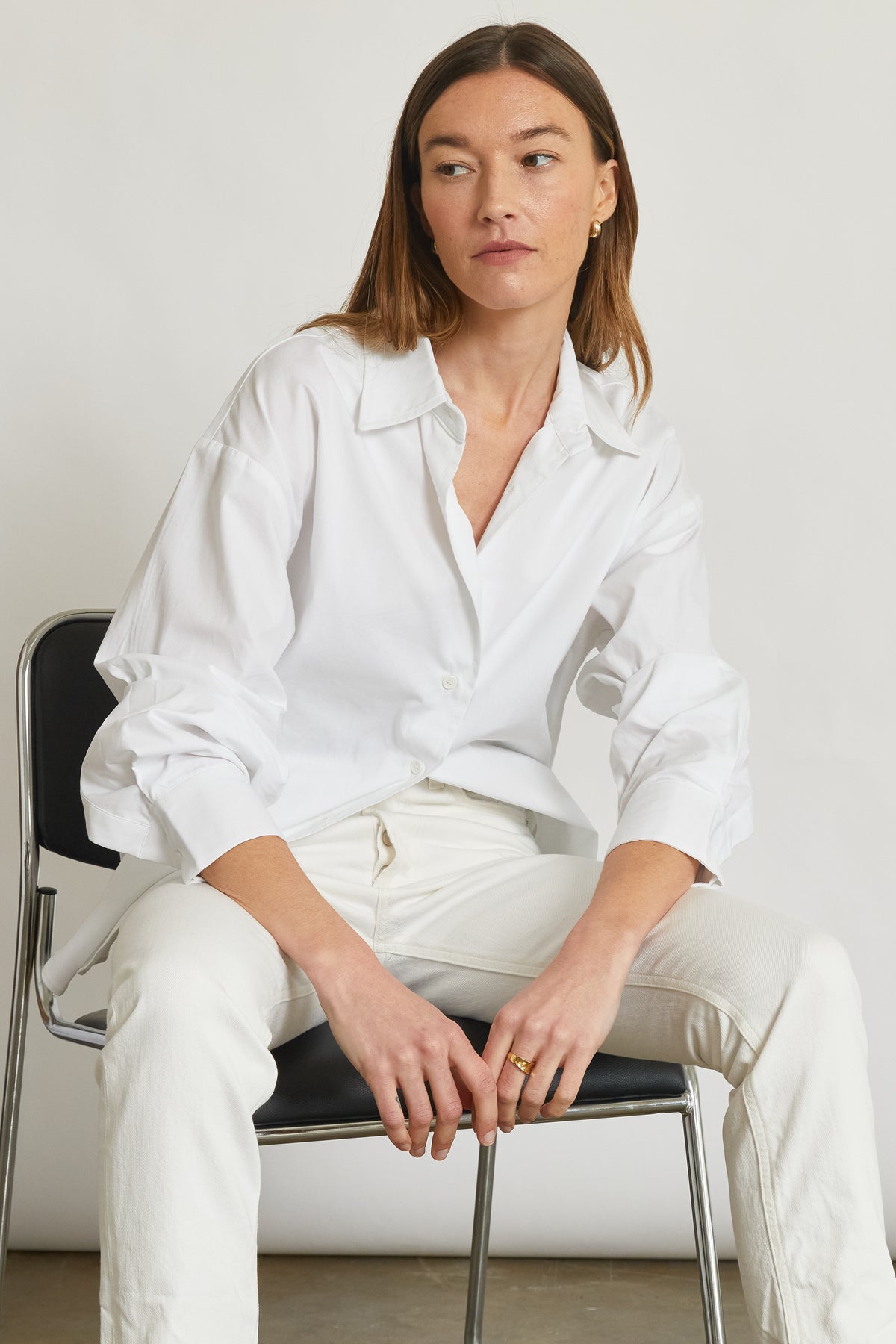
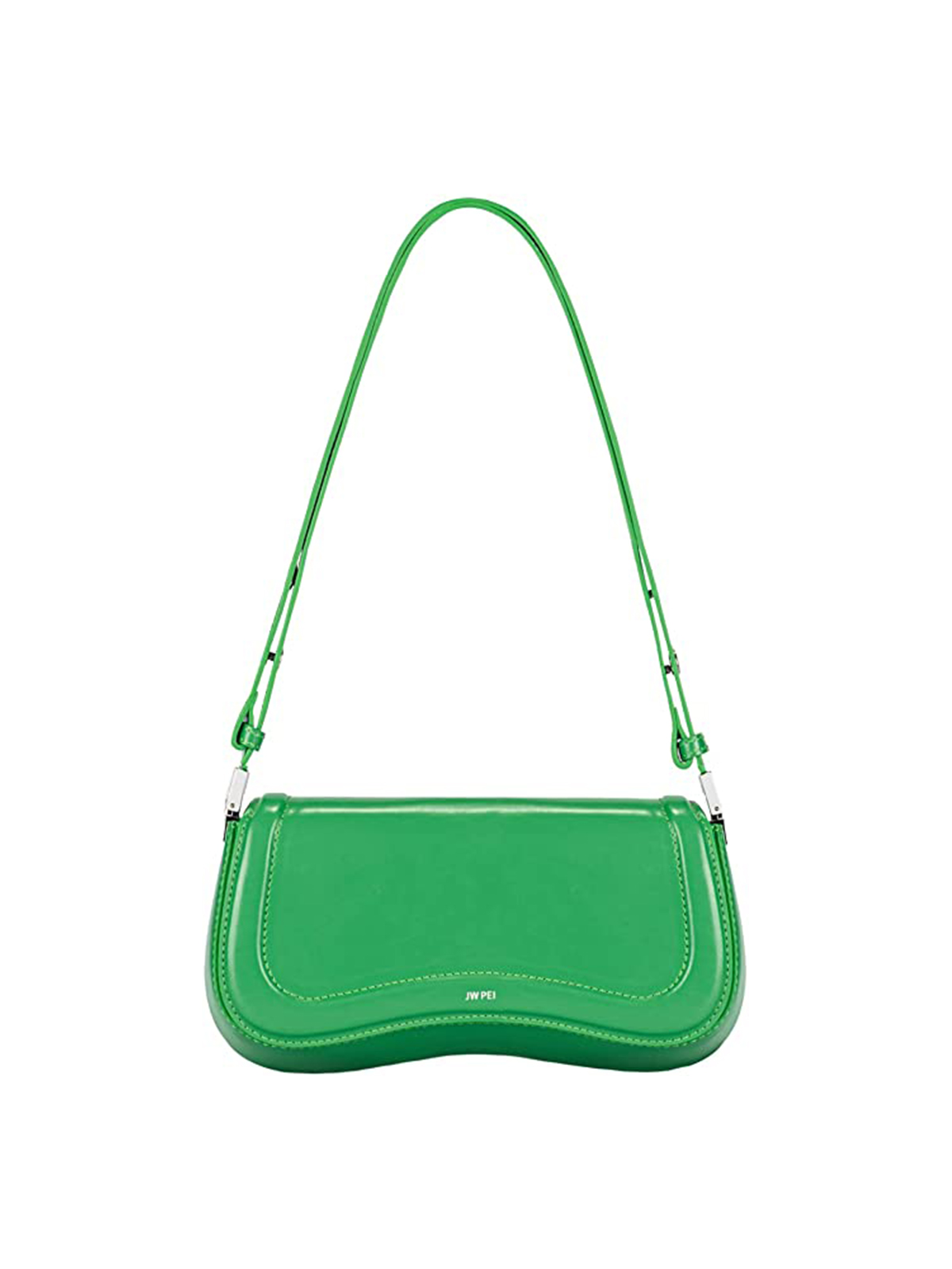
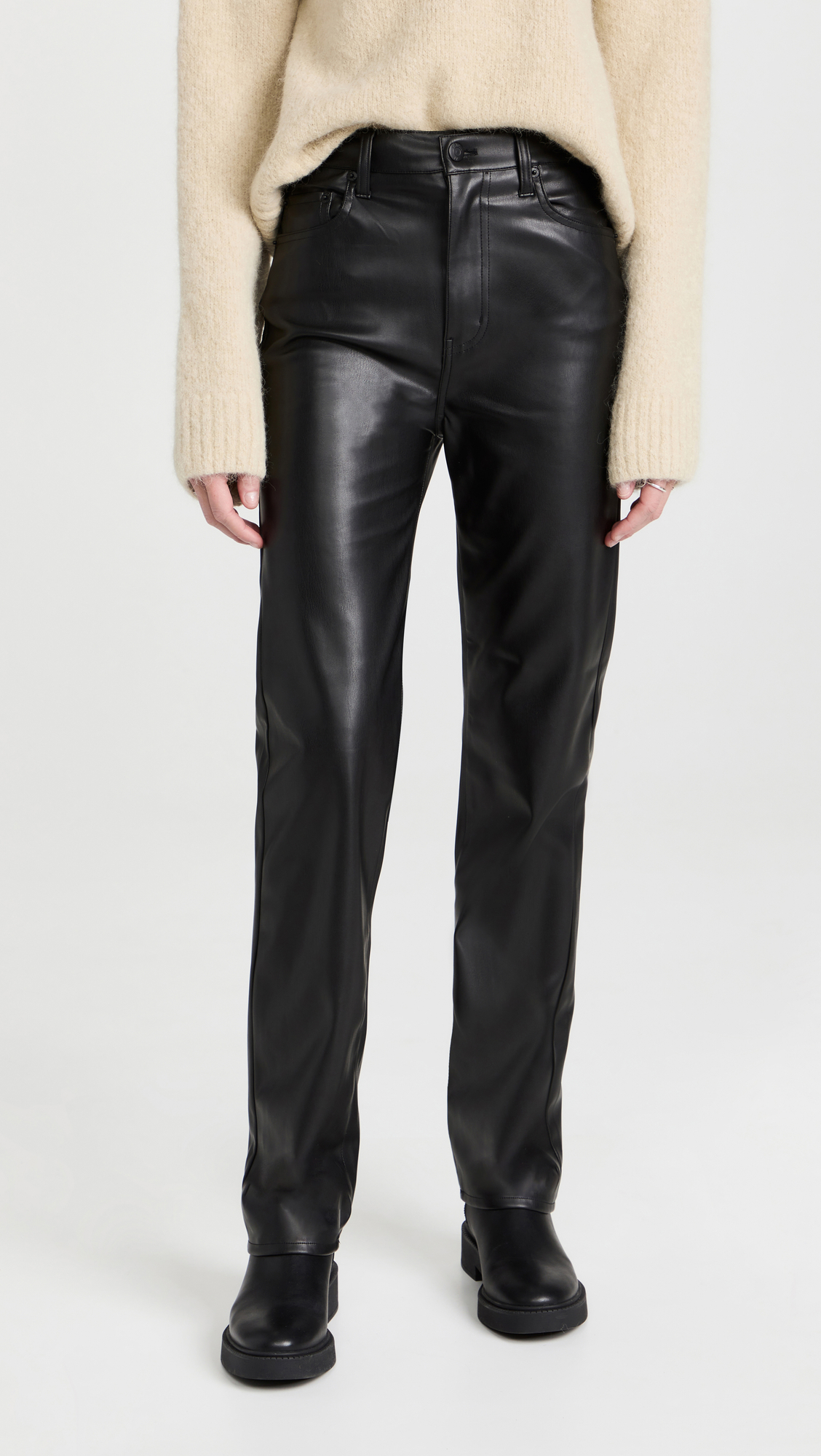
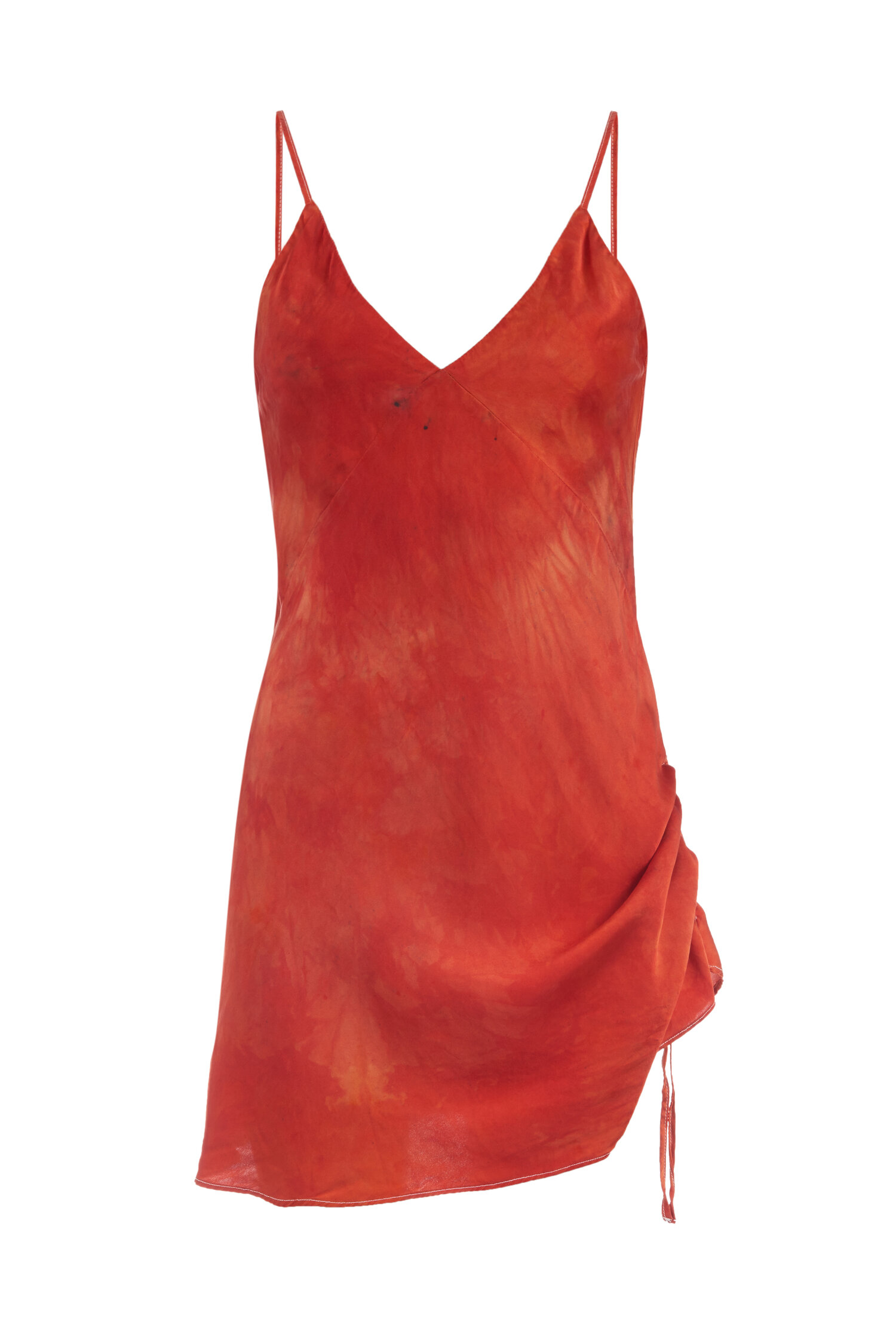
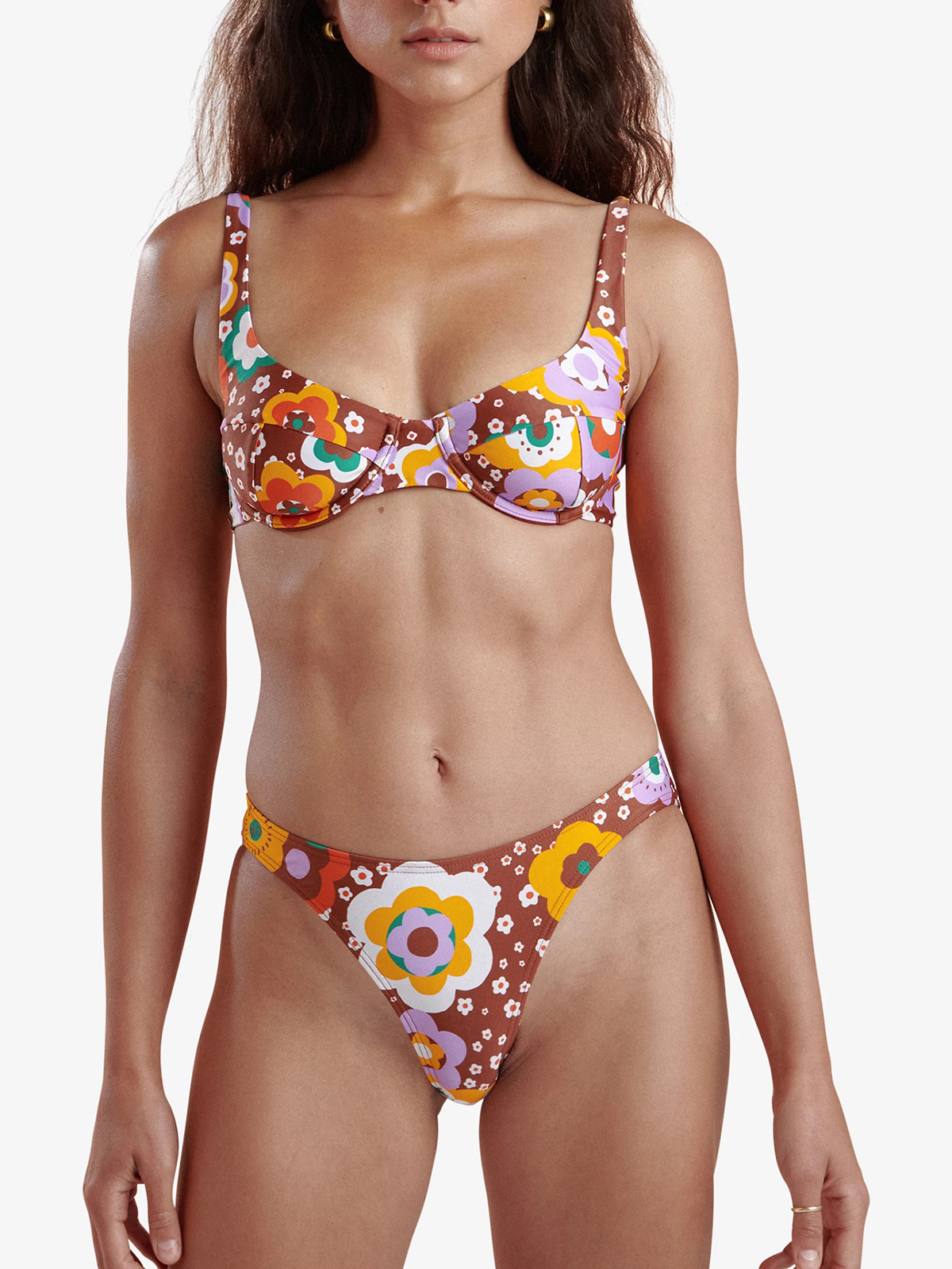
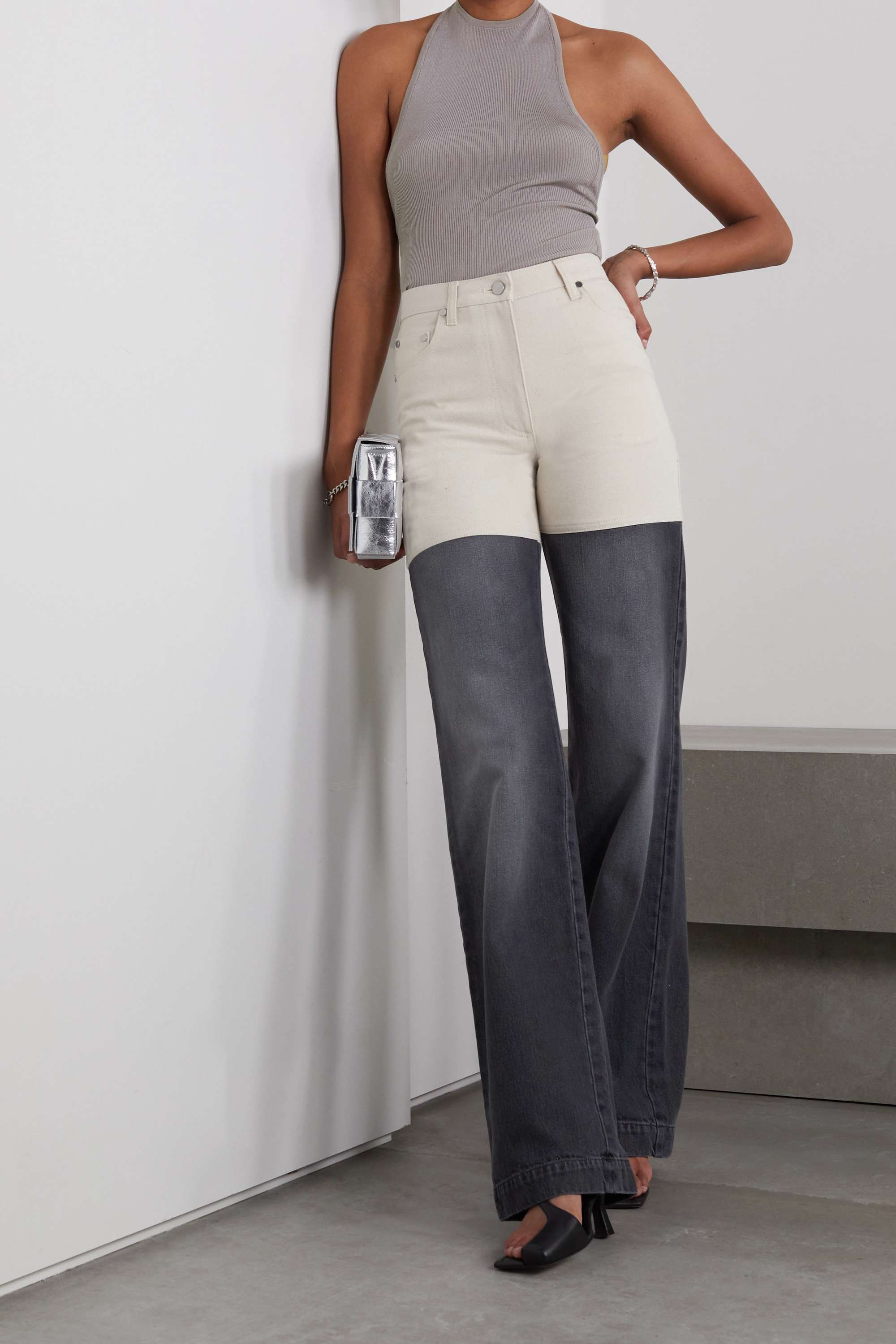
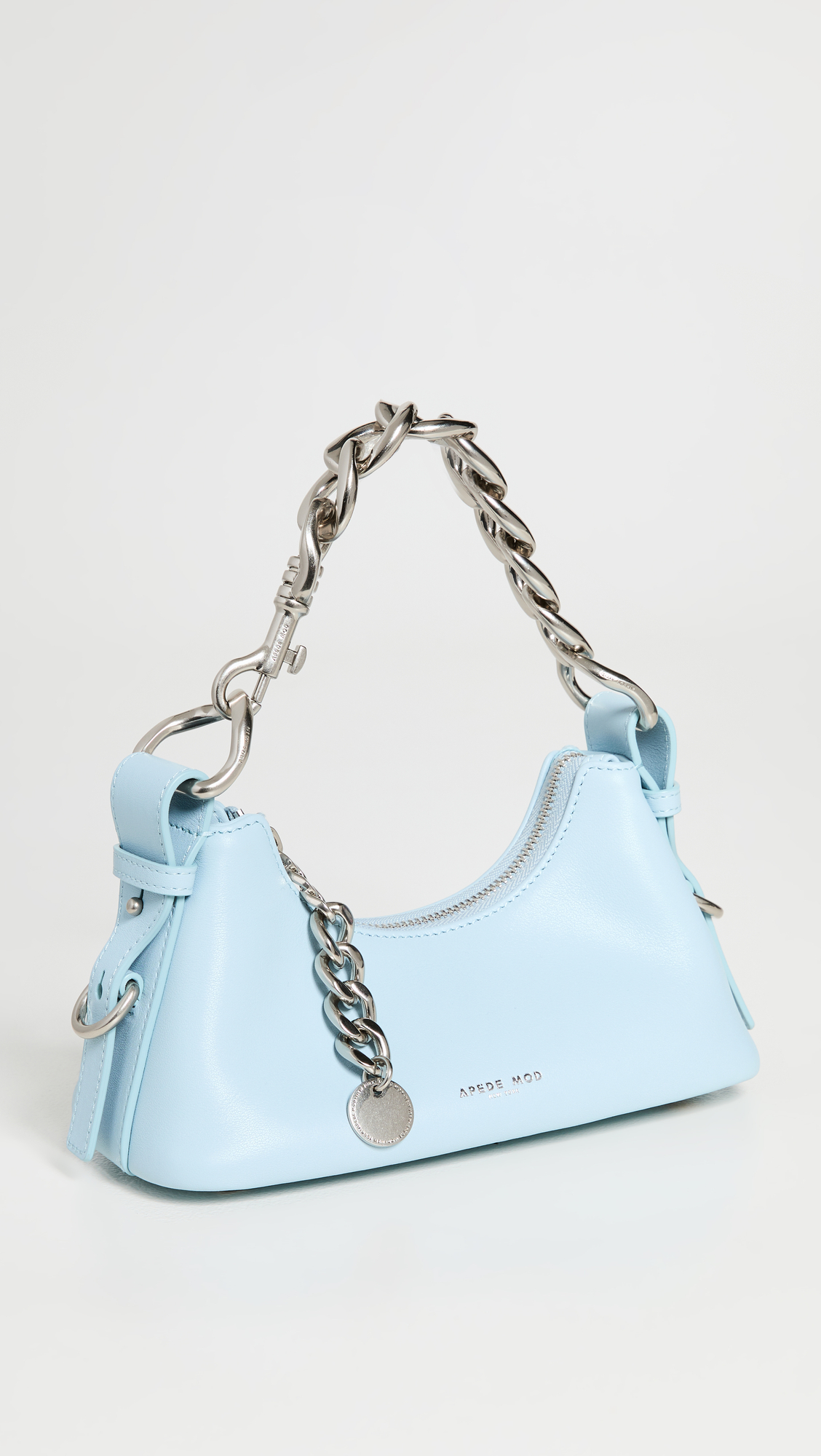
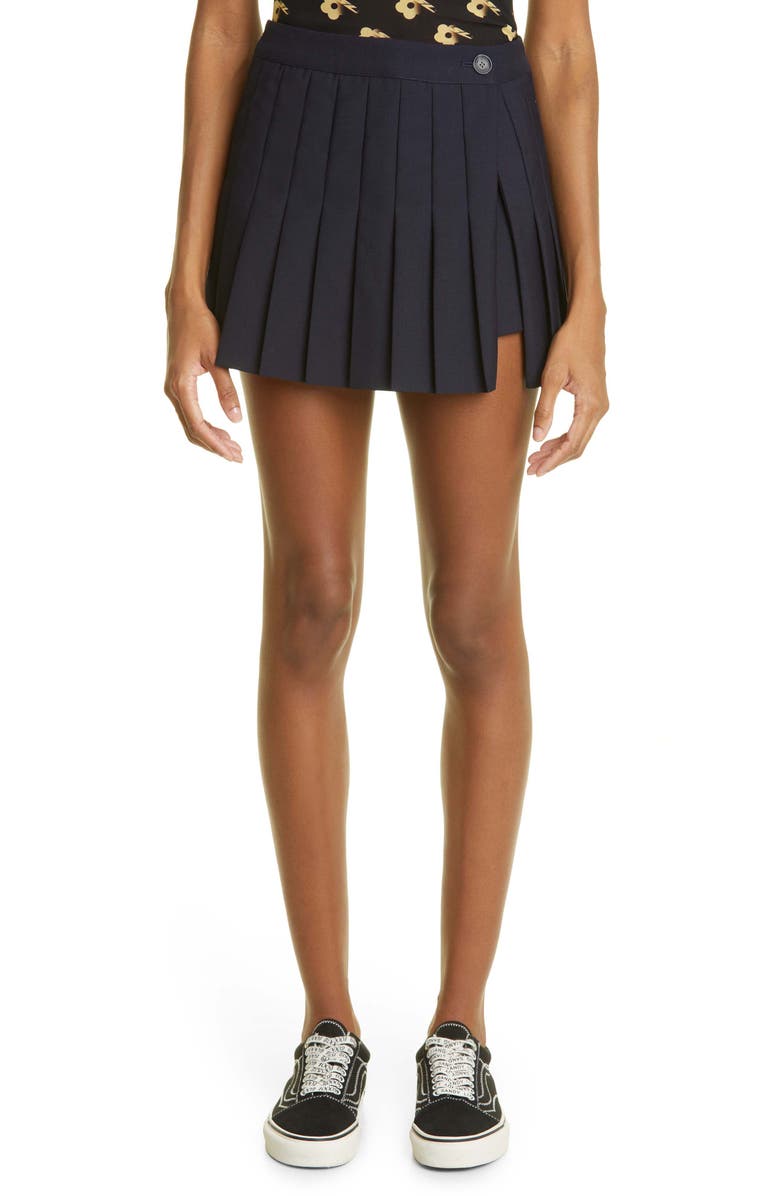
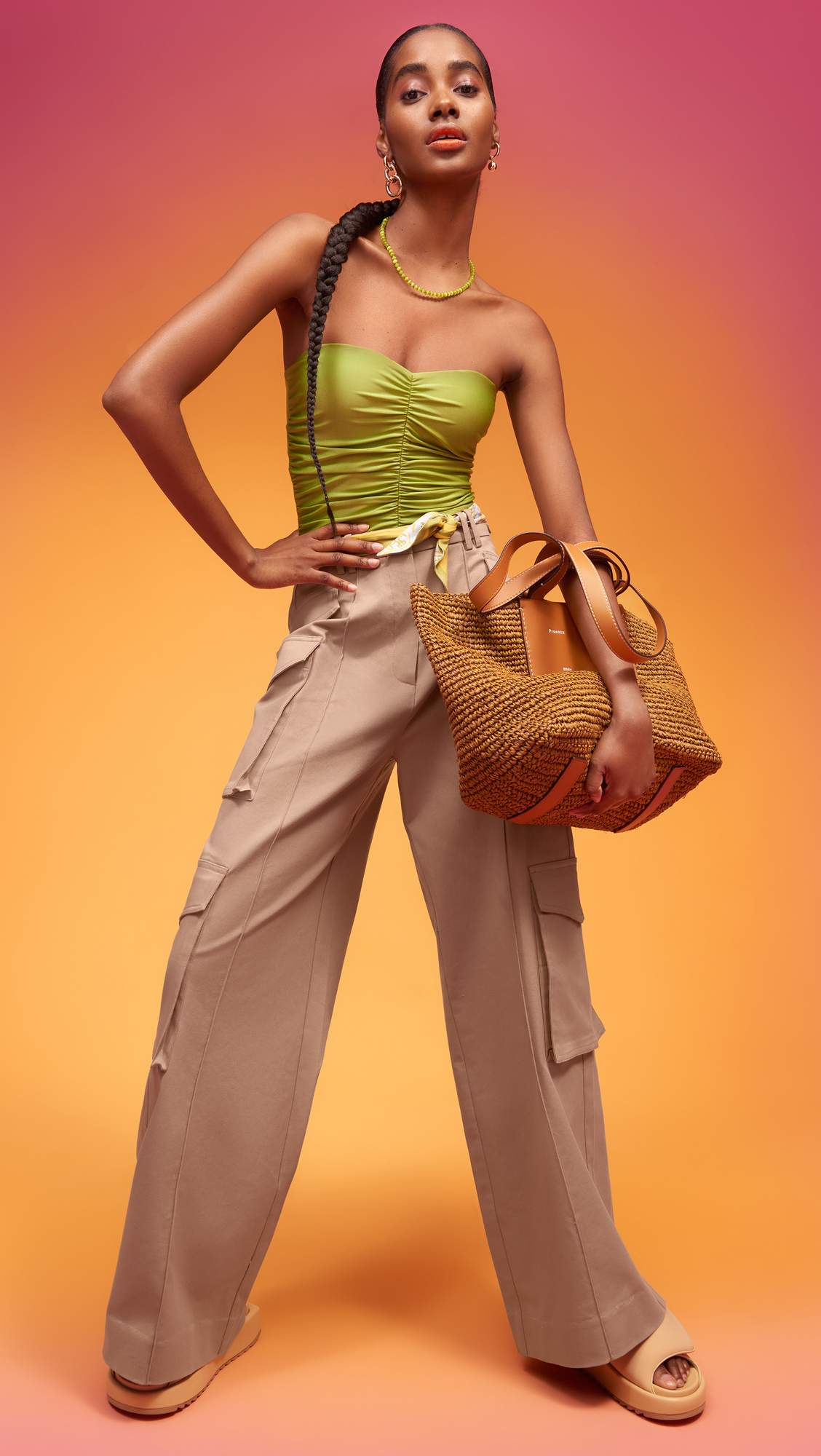
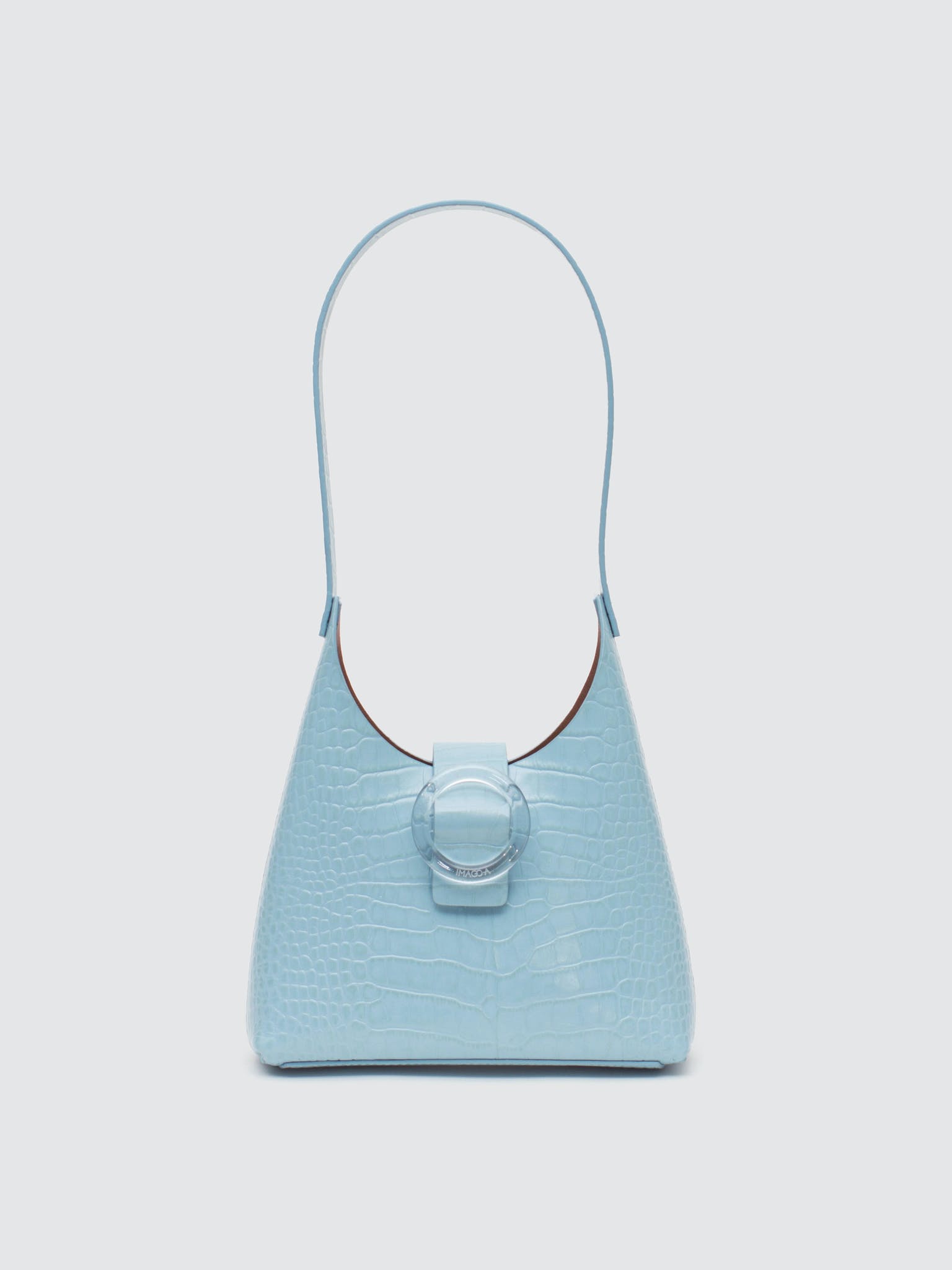
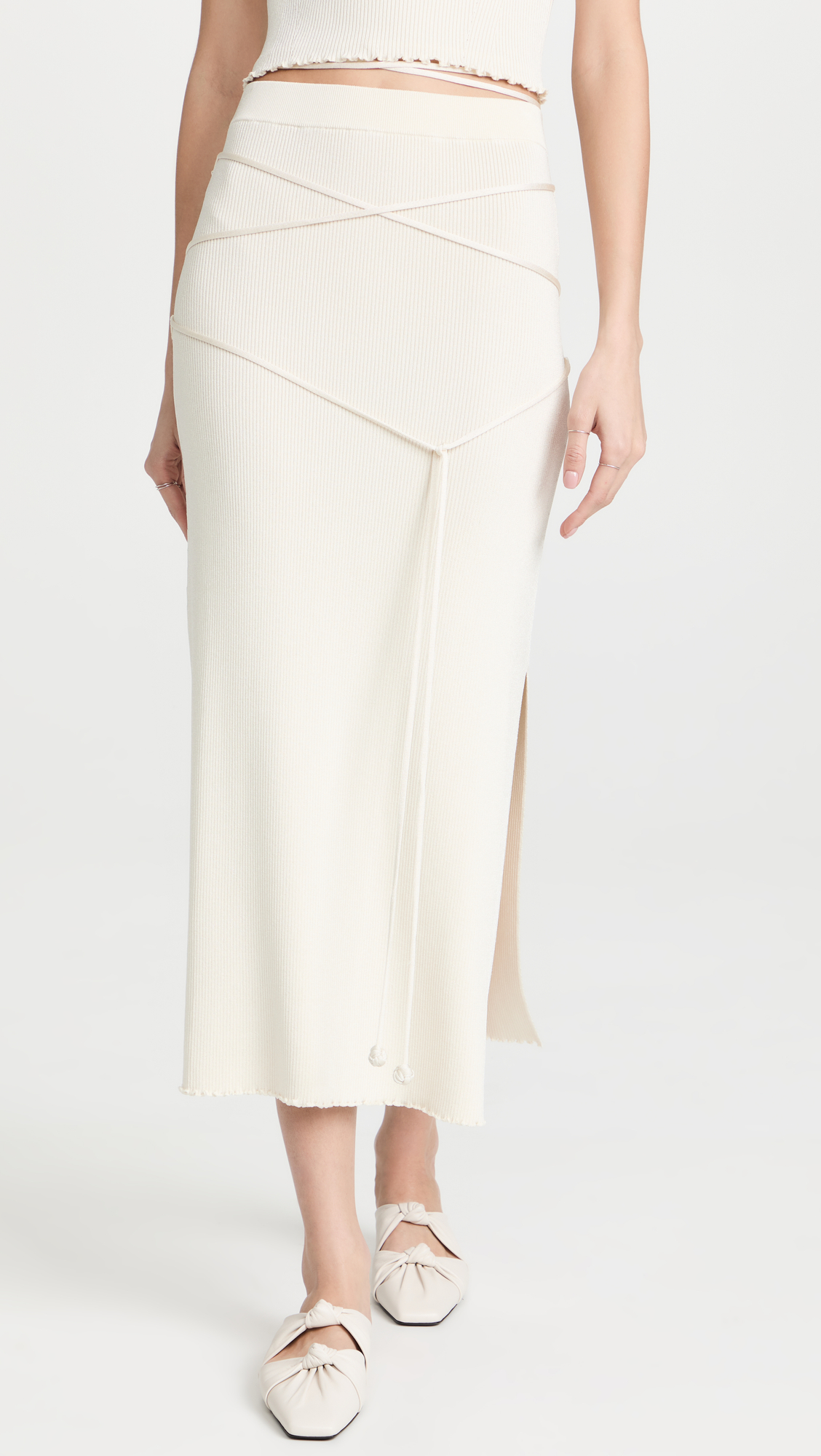
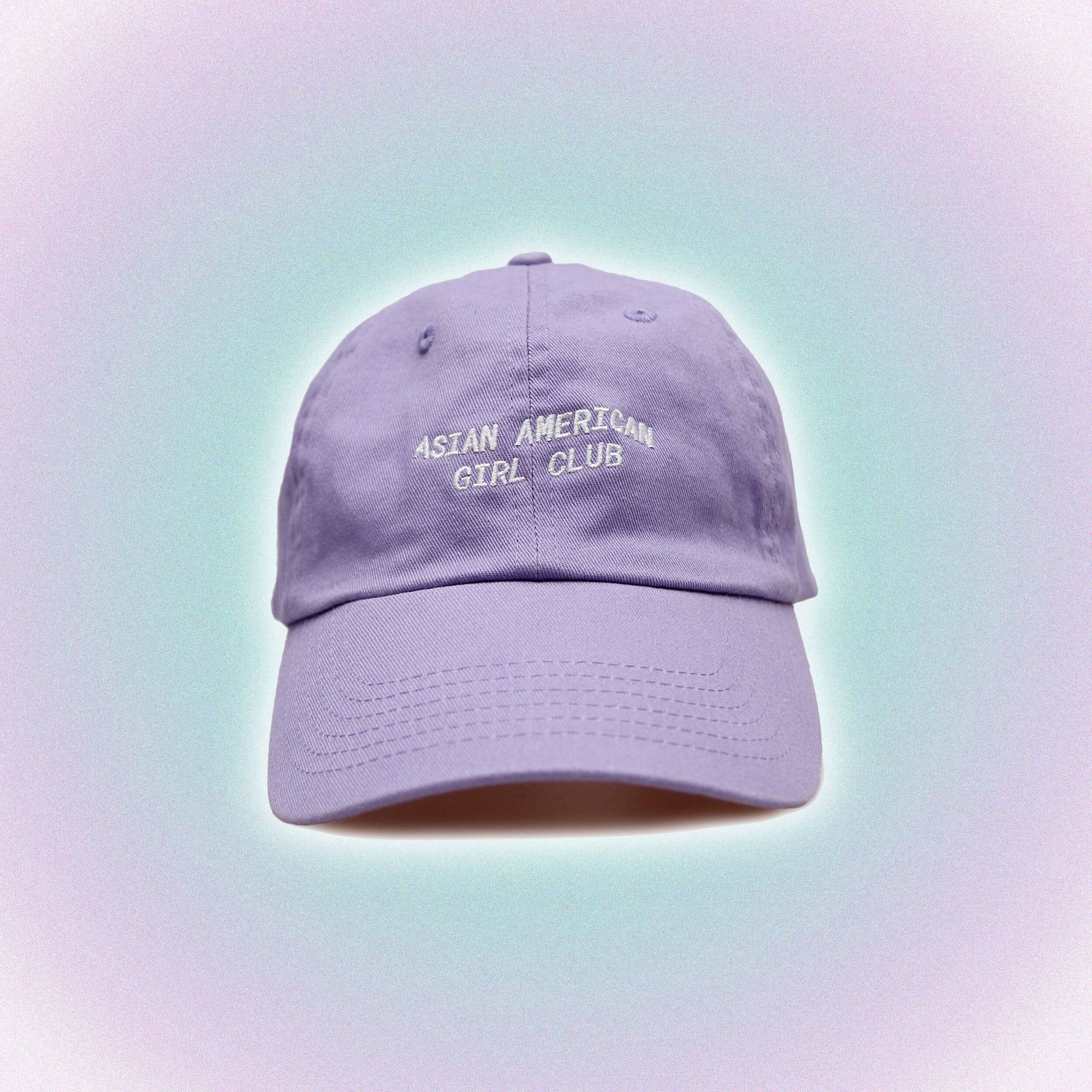
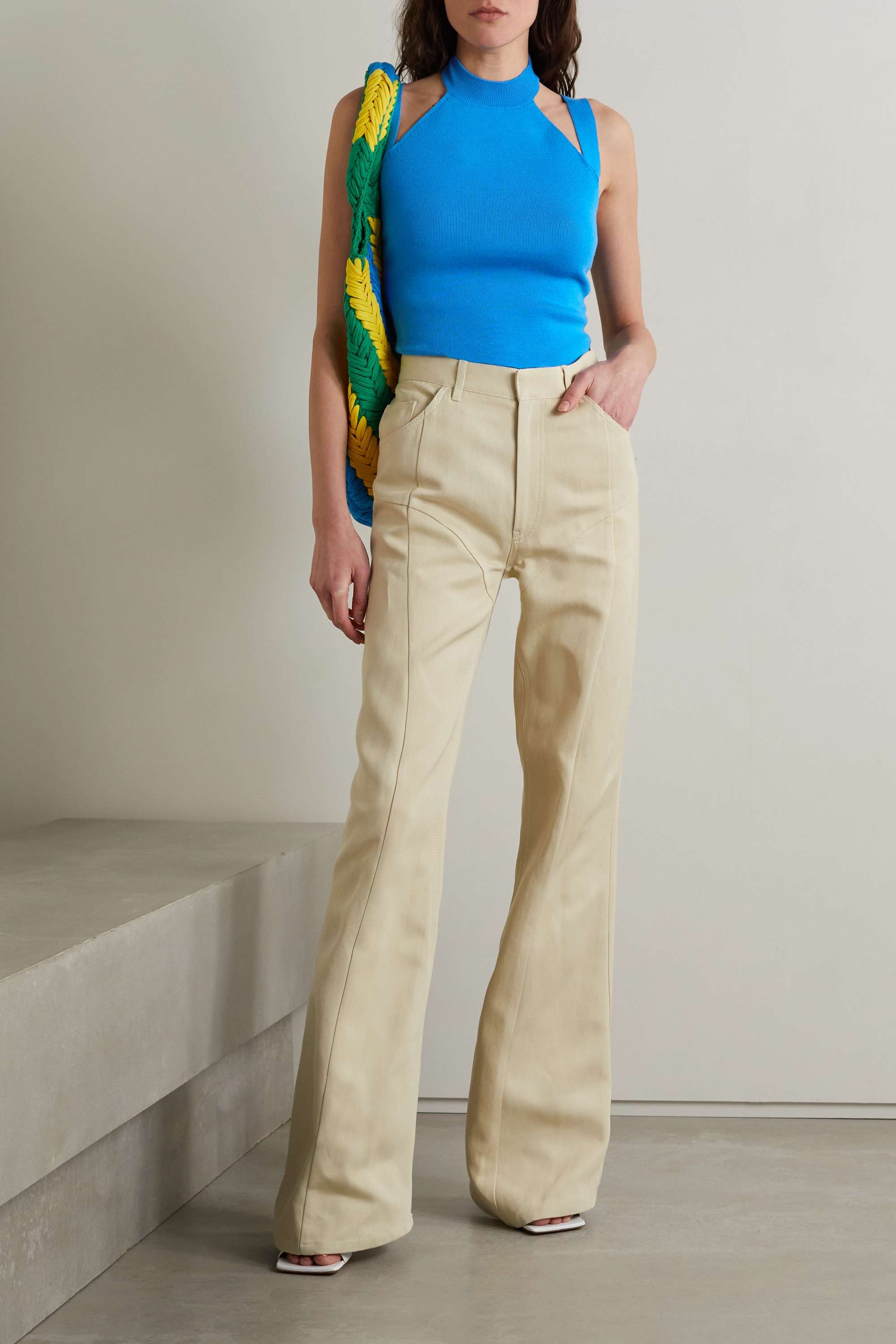
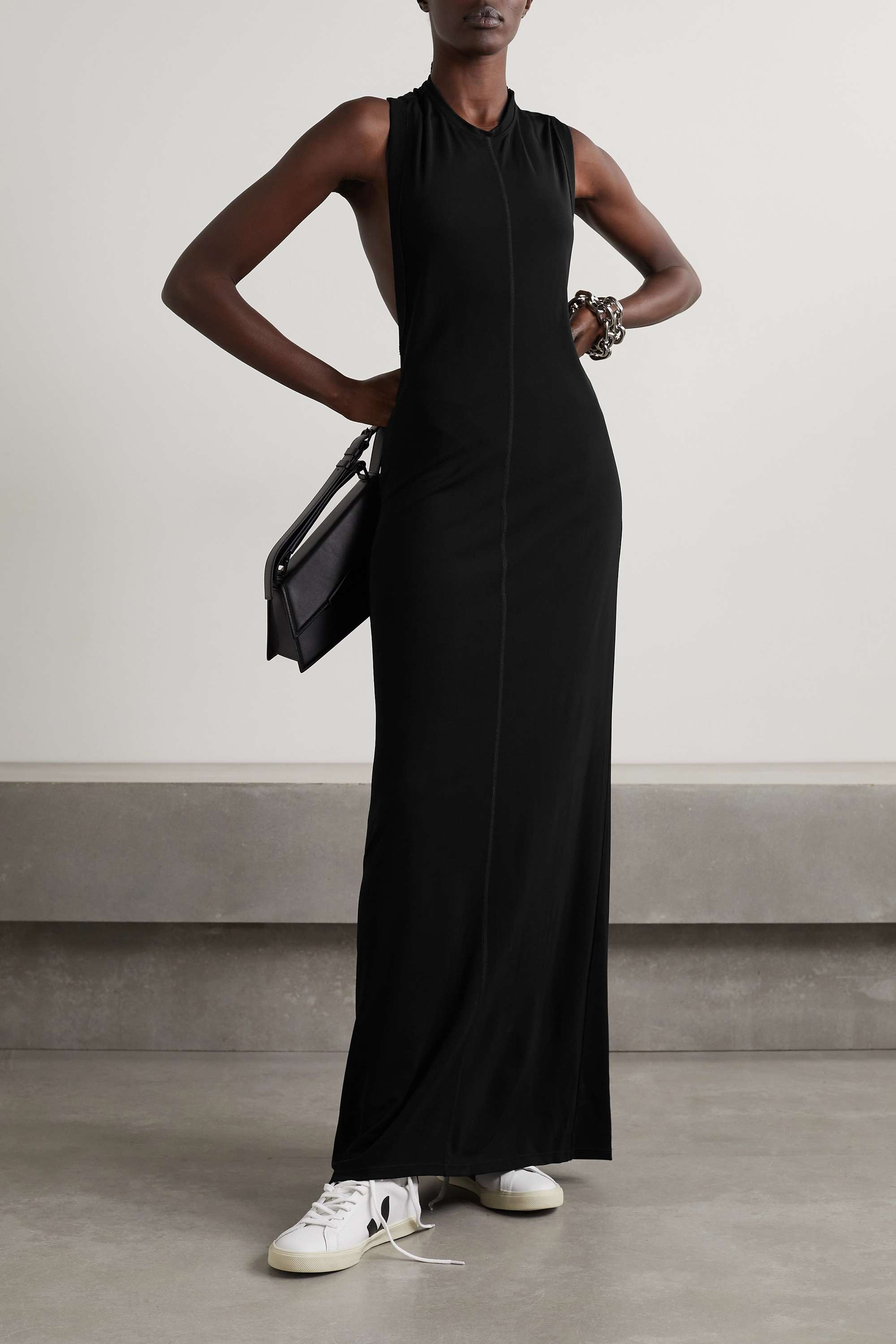
Coming up: 30 AAPI Fashion Brands That Will Make You Want to Get Dressed Up Again

